November 8 - 14, 2015: Issue 239
Pittwater Reserves - The Green Ways Bungan Beach and Bungan Head Reserves: A Headland Garden

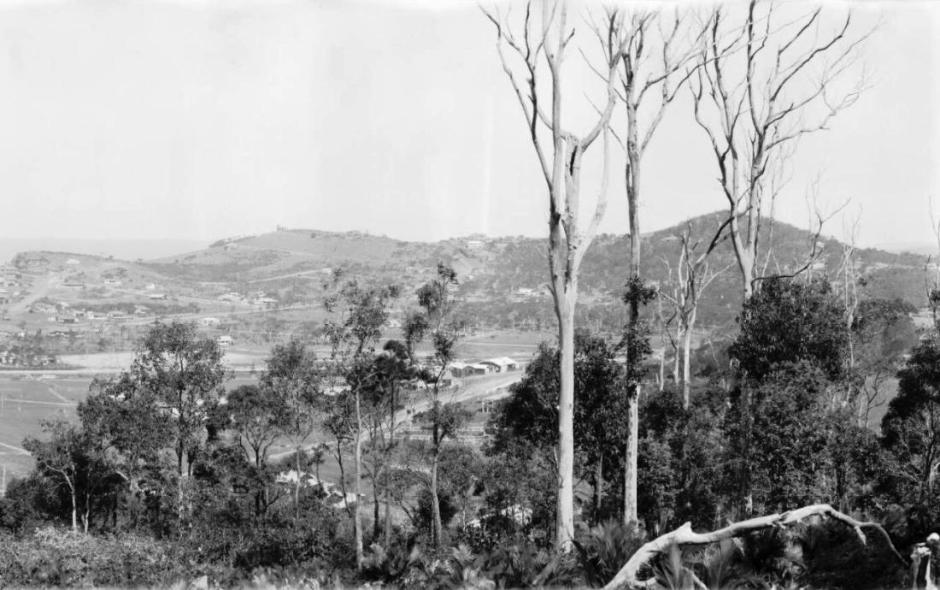
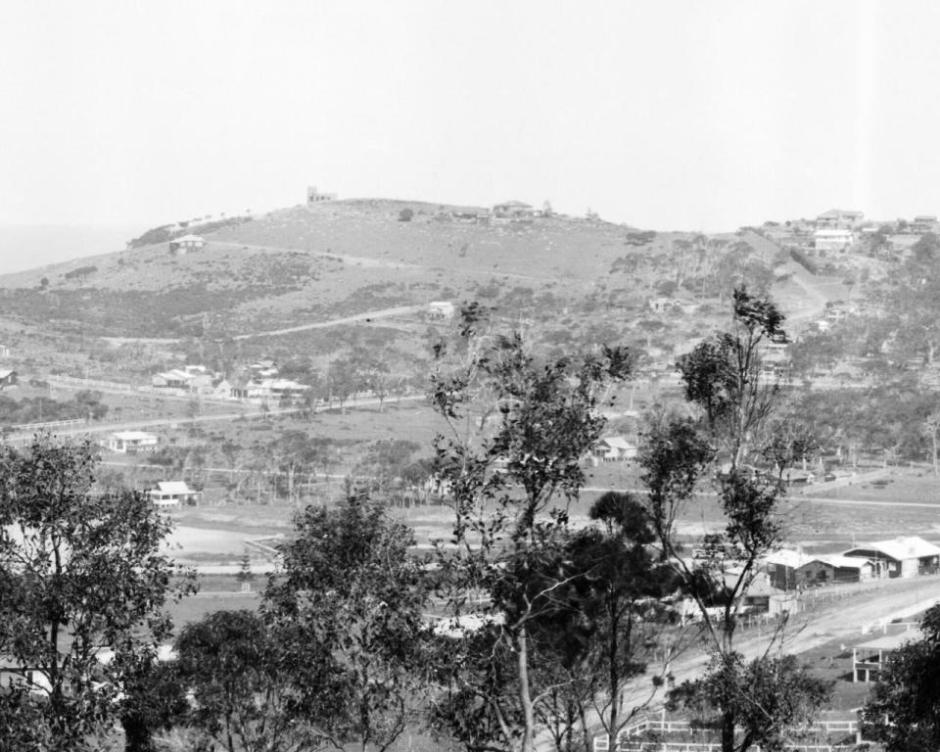
Sections from Panorama of Newport, New South Wales [picture] / EB Studios; between 1917 and 1930, Image No.: 6154744, courtesy National Library of Australia.
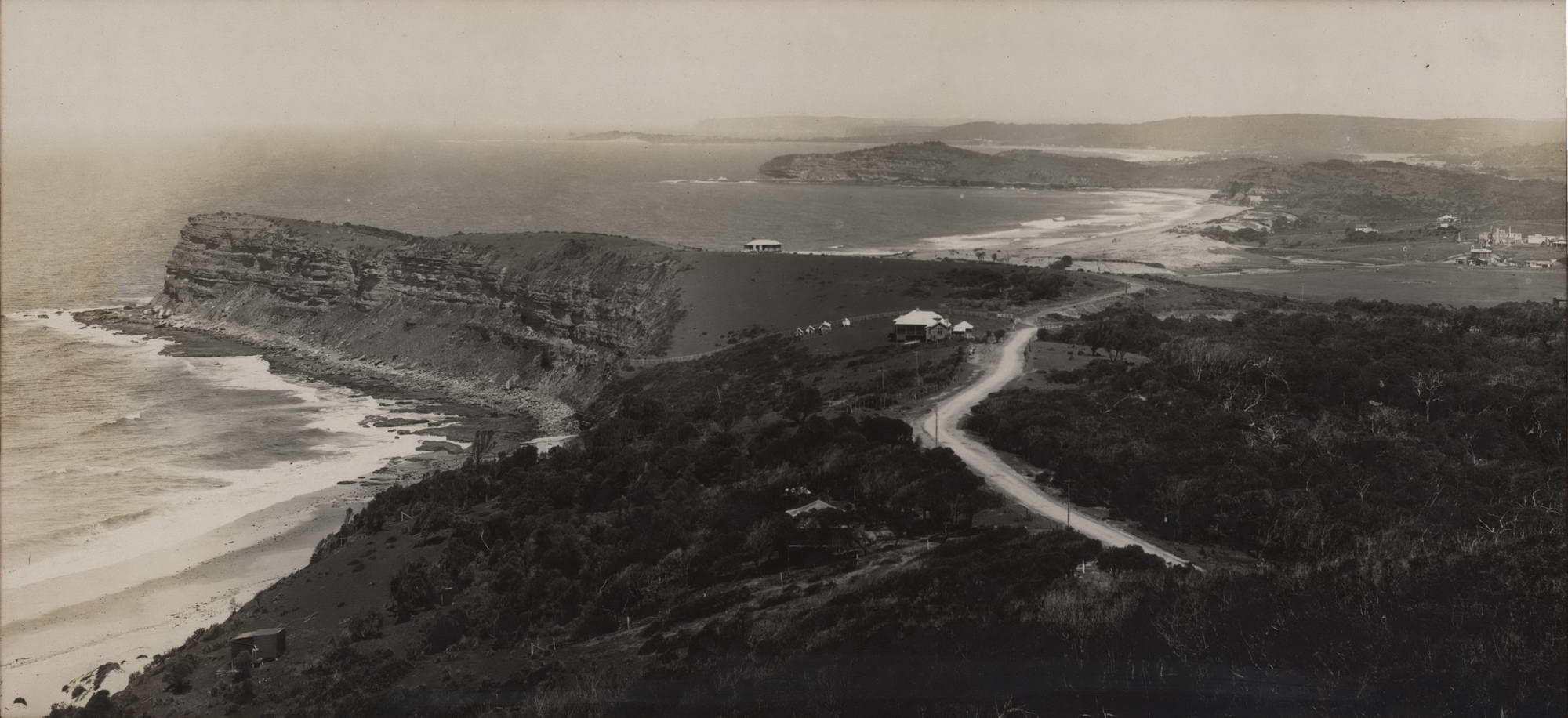
View From Bushranger’s Pt Near Newport Hill [NSW] c1920s. Vintage silver gelatin photograph, typed title on accompanying slip, Shows Bungan and Mona Vale Beaches. By NSW Government Printer (Aust., commenced 1842). Item #CL174-113 - Price (AUD): $1,250.00 - from Josef Lebovic Gallery
People in the landscape and people caring about their landscape, similarly to Marie Byles of Palm Beach, is what sounds out from the rounded and tucked away Bungan Beach, one of those secluded places in Pittwater which many whizz on by, with its sheer cliffs.
Reading through past records show the gullies leading out from Bungan and sloping towards Pittwater, the open valley of Newport itself, and the headlands above Bungan were all wreathed with streams and creeks and lagoons when it flooded.
Pitt Water Property.
MR. A. POLACK will let by private contract, Two first-rate producing farms, on which are erected buildings amounting in value to upwards of £3000. There is also a good weatherboarded house, containing three rooms, verandah,and skillion, &c There are six acres in cultivation. The estate, containing altogether 140 acres, has several paddocks, besides cultivation grounds. This property is situated in the parish of Narrabeen, between Bangan Head and Bilgola Head, on the sea coast, near the Little Reef, and only one mile from the landing place at Pitt Water, and the best watered farm in the whole of the district.
As a proof, the auctioneer will sell, with the place to be leased, for three, five, or seven years, and a very low rate, 40 first-rate milking cows. The proprietor of this well known dairy establishment would have remained in occupation of it, but having received a very severe Injury, he is obliged to vacate it, in order to be near the City, for the purpose of receiving the best medical treatment. Terms known on application at the rooms of the auctioneer, Pitt-street, Sydney. Advertising. (1854, March 20). The Sydney Morning Herald(NSW : 1842 - 1954), p. 7. Retrieved from http://nla.gov.au/nla.news-article12957864
In Mona Vale Outrages George Champion OAM relates the history of what became known as 'Mona Vale Farm' and the persecution of any and all who took over the lease on this property, including the The Murder of David Foley as related in an earlier Issue by Shelagh Champion OAM.
As Mr Champion states:
“Mona Vale” continued to be advertised for lease until July 1862. About this time James Therry arrived in the Colony with his family. He was the nephew of the Rev John Joseph Therry, who had substantial land holdings to the north of John Farrell II. James Therry took the lease of “Mona Vale” and renovated the house for his family. However, before they could occupy the residence it was destroyed by fire, on 5 November 1862. Suspicion fell on John Farrell II, as Therry had already had occasion to speak to him about his cattle trespassing on “Mona Vale”, whereupon Farrell had said that Mr Therry would not remain on the farm for six months. At the inquest into the fire, however, the jury concluded that “the said premises, situated at Mona Vale, Pitt Water, were wilfully and maliciously set fire to, but the evidence does not clearly show who the guilty party or parties are.” According to the Sydney Morning Herald, Therry was then threatened that if he did not leave the district he might expect further injury, not only to his property but to his person.
The Therry family persevered, living in tents and a makeshift hovel. A reporter from the Empire, who visited the remains of the ruined homestead, said he saw standing near what had been the hearth of the burnt dwelling-house, a woman, who, from her manners and conversation, was evidently a lady. A number of young children were also gathered round a small hovel which had been erected on a rising ground beyond.
The lady spoken of was Maria Louisa Therry (nee Barry) born 1819, of whom we have run a prior history page during our first round of Pittwater Matriarchs.
Bungan Beach and Bungan Head Reserve cover an area of approximately 4.8 and 2.9 hectares (7.16606 acres) respectively, in the suburb of Newport. Under section 36(4) of the Local Government Act 1993, the Reserves are classified as community land in the category of Natural Area, comprising the further categories of bushland, escarpment, watercourse and foreshore. It also contains a small area of General Community Use land including and immediately surrounding the Surf Life Saving Club.
Under Pittwater Council's Open Space and Recreation Settings Inventory Bungan Beach and Bungan Head Reserves comprise the setting classifications: beach and shoreline, bushland and hilltop/bluff/headland.
Eight Lots which make up a large portion of the reserve were renamed Betty Morrison Reserve in memory of the lady who bequeathed the land. Betty Morrison Reserve, Bungan head reserve and Bungan beach Reserve are collectively referred to as Bungan Beach Reserve.
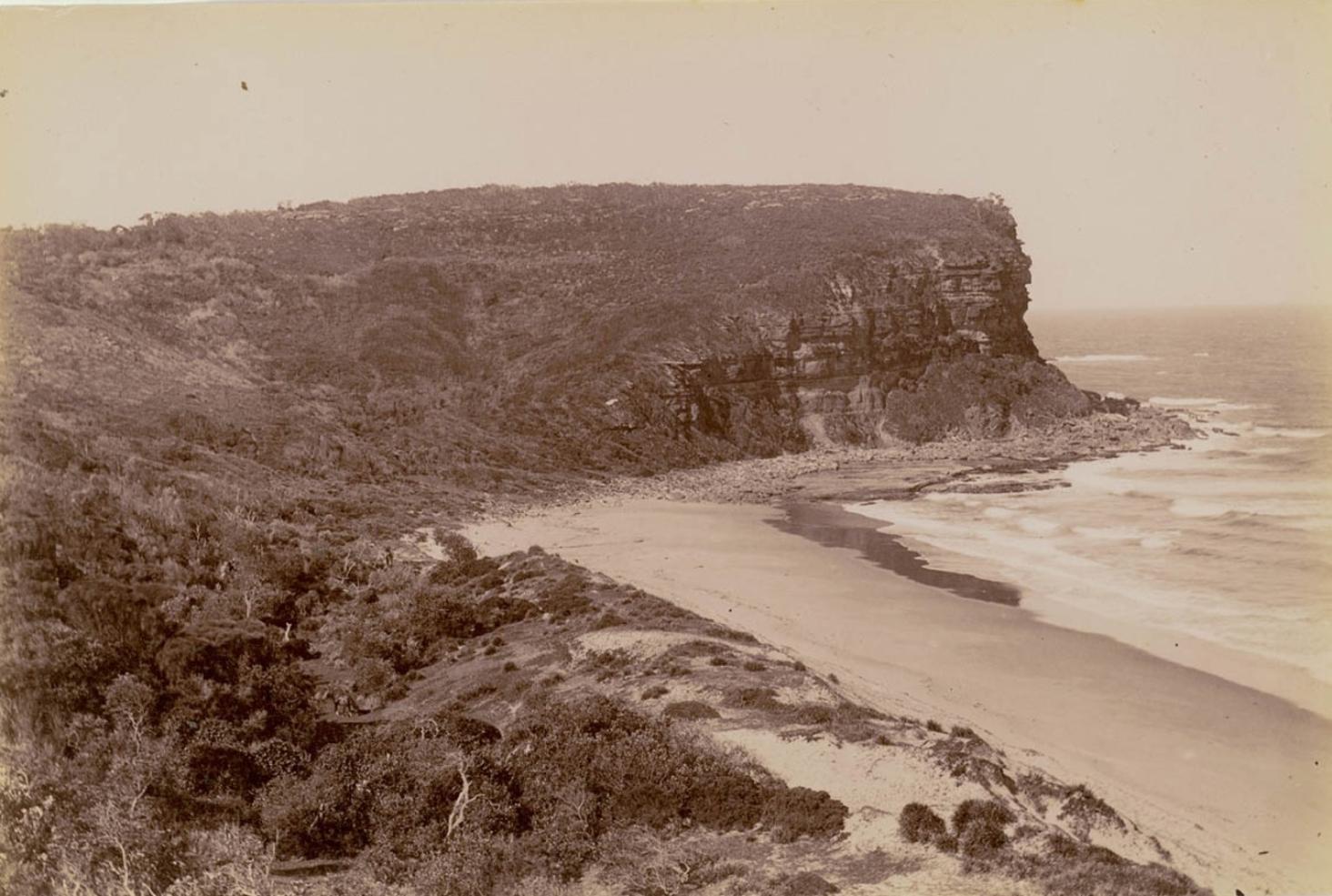
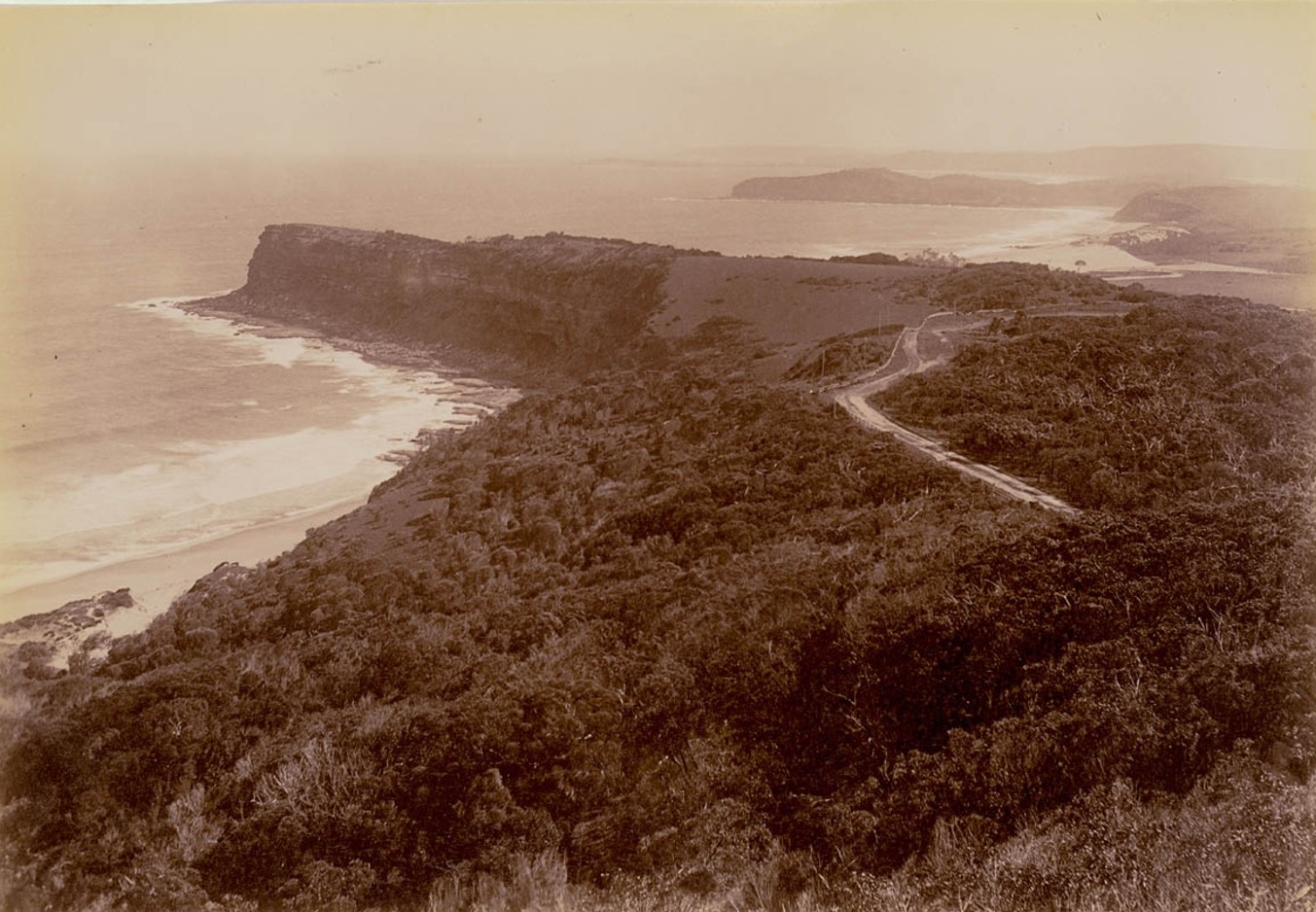
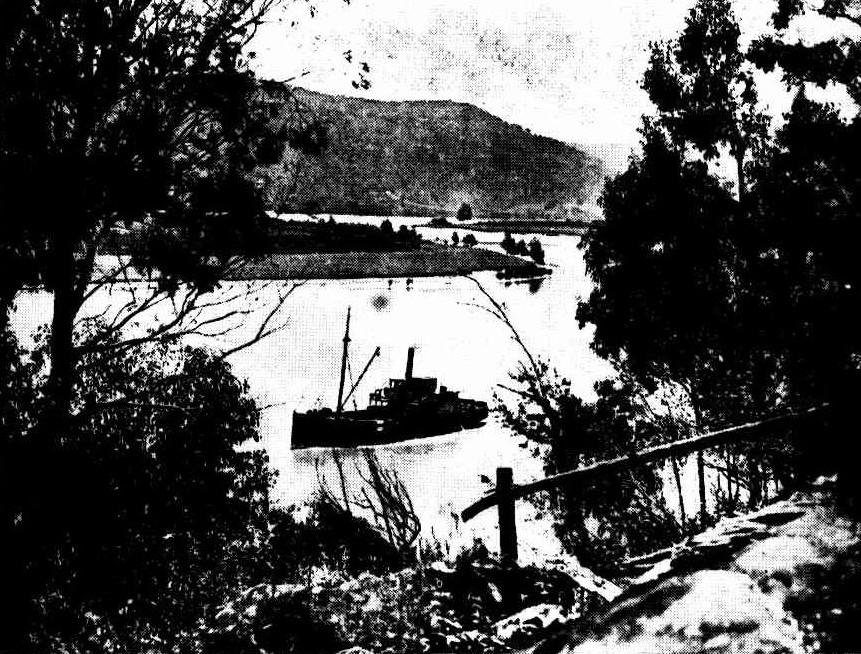
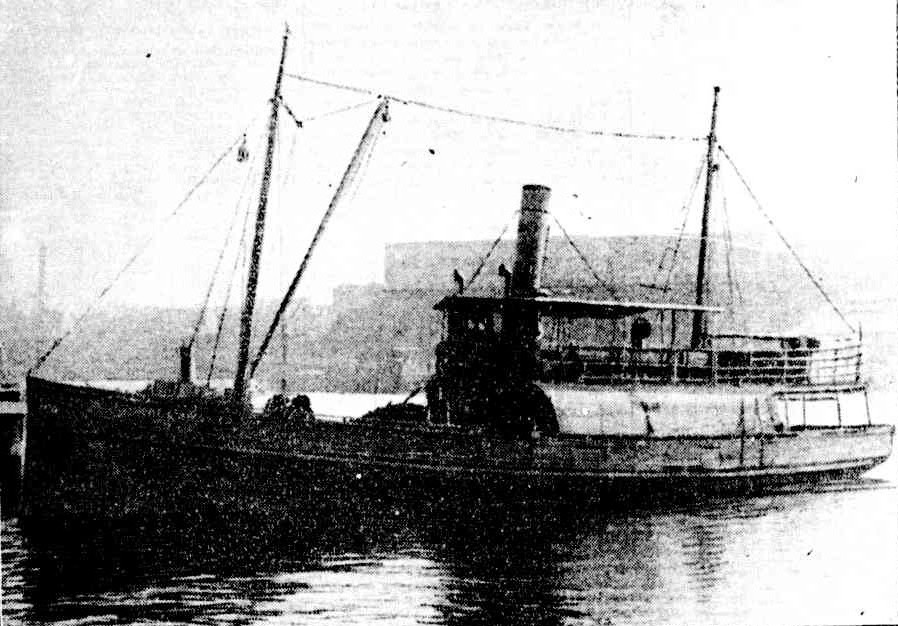
Bushrangers Hill - A View from the Sky
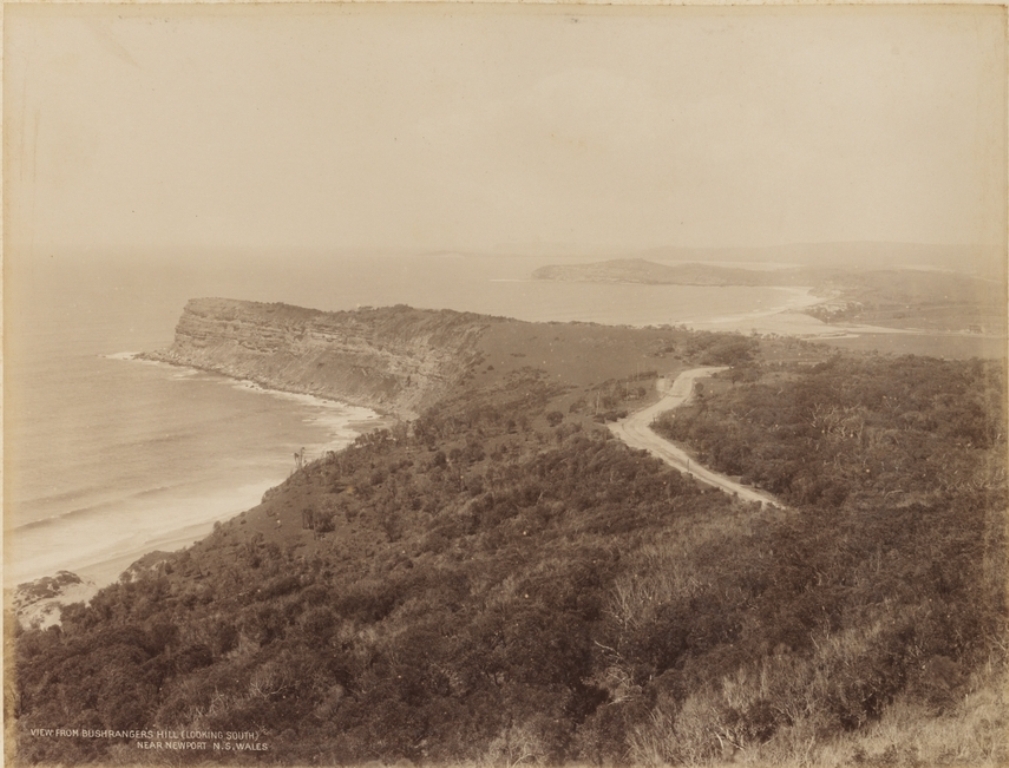
"View from Bushrangers Hill (looking South) Near Newport" Image No.: a924065h, New South Wales, 1879 - ca. 1892. N.S.W. Government Printer, Bushrangers Hill, Newport, NSW. Courtesy State Library of NSW.
Bushranger's Hill Reserve occupies 0.29ha and is located above Bungan Beach, between Barrenjoey Road, Bungan Head Road and Karloo Parade. The coastal ridgeline reaches a dominating peak within the Reserve, affording magnificent views of the coastline. The Reserve was a previous Koala habitat. It provides spectacular views of the coastline.
Bushranger's Hill contains low Open Woodland and Coastal Heath and Scrub communities providing habitat for mammals and birds. The rock outcrops also provide shelter for reptiles.
The thick coastal heath, small creeks and large range of flowering plants at Bungan Beach Reserve provide habitat resources for a range of fauna. This is reflected in the species list, based on records kept by residents. Such long term record-keeping is particularly useful as it can result in better appreciation of the habitat value of the area. The fauna of Bushranger's Hill would be very similar to those that occupy and frequent the Bungan Beach Reserve but likely to be more diverse, due to the woodland habitat present on the Hill.
Bushranger's Hill is also a recorded hilltopping site for the butterfly, Deudorix diovis, which is an extension of its southern distribution. In addition, it provides potential feeding habitat for the endangered population of Squirrel Glider, with winter flowering Grey Ironbark and Grey Gum.
ON BUSHRANGER'S HILL
by THE SPECTRE
Rest, and be thankful. On the verge
Of the tall cliff, rugged and grey,
At whose granite base the breakers surge,
And shiver their frothy spray,
Outstretched, I gaze on the eddying wreath
That gathers and flits away,
With the surf beneath, and between my teeth
The stem of the "ancient clay."
" Here you are," said our guide, " here's where the bushrangers used to come and hide in the old days."
The bushrangers showed good taste, truly, in their selection of a retreat, though it is hardly likely that artistic considerations influenced them in their choice. The knowing old hands - the men who had run the old gamut of villainy and were now being hounded down again by the law - only chose the resort because of the commanding view of the country all about. Lying perdu here they could keep their eye on the whole coast from Port Jackson to Broken Bay ; the track to Newport ran almost under their nose, and, given a proper watch, a surprise was impossible. So the bush- rangers' hill became famous in the convict days, and from all parts of the country the men who had taken to the bush drew toward the lonely eyrie. Then, when the place began to get unwholesomely crowded, the troopers would make a rush; but long ere they could reach the hill its occupants would be gone, and nothing but a smouldering camp fire left to mark the spot. Some old hand, doubtless, standing where the trigonometrical cairn now makes a black mark against the sky, had seen the heliograph-like flash of the troopers' swords hours before; had watched the little band as it forded the Narrabeen Lagoon, and long before it could even reach the track which leads up to the foot of the hill, had given the alarm signal which had once more scattered his mates all over the bush.
The process must have been repeated many times, and so, years after, when a scanty fringe of settlement began to creep up and around Pittwater, and to dot its indented shores with little flower-covered homesteads, the place kept its name. And then in later days a man, armed with a theodolite and a compass, and various other mathematical instruments, struggled up the top of the mass of rock. He also found the commanding position of the hill of value, though he acted from motives far different from those which guided the old bushrangers. Ho simply wanted a prominent point to form the apex of one of his primary triangles, a point which could be looked up to and its angle measured for miles around. So, to make sure of the point, and to prevent any blundering surveyor measuring the angle subtended by the wrong piece of rock, he planted a stout pole, having a pyramidical cairn of stones by way of foundation. Then he put a couple of discs, like railway following signals, on top of the pole, and went away quite contented with his work.
No one goes to the place much now ; a few city visitors sometimes find their way up the hill, and after saying "how pretty, " remark that it must be time for lunch, and so find their way down again. Even the little black-and-tan hotel dog has got tired of the hill. He wagged his tail joyfully when he saw that we were going for a walk, and even condescended, in his patronising way, to accompany us along tho dusty road. But when we commenced tho ascent of the hill he protested. "Can't see what you stupid people want to climb the hill for on a hot day like this. There's nothing at the top except some ugly rocks, not even a 'possum or a wallaby to chase. Besides I've been there before." So he wagged his little tail and set out on his own account. When we came back to the hotel a few hours later he was quietly resting in the shade of the doorway. "I told you so," he said as he gave us greeting. " Hope you'll take my advice next time."
The absence of the dog, however, did not prevent us toiling steadily up through the tangled masses of fern and flannel flower, till we reached the cairn at the top. It is a pleasant place to sit and think whilst the dull boom of the breakers makes muffled music right under your feet, and the kingfishers flash brightly to and fro in the branches all round. There is a grandeur about the shore line as seen from this bird's-eye point of view. From Barranjoey to the Heads the coast stretches, not straight, but in a series of noble curves fringed with a shining line of yellow sand, and a glistening white circle of breakers. Here and there the reefs jut (with long finger-like points) provokingly out into the blue waters, and the sea lashes at them impotently, sending up clouds of white mist over and around those immovable rocks. It is an old story, as old as the world. For ages the sea, lazily sending in its breakers one after the other, has been striving against those rocks, and for ages the rocks, secure in their position, have declined to move out of the way. The sea is in a quiet mood today. The long blue Pacific rollers are gentle, almost languid in their movements, and they break on the rocks with a deprecating could'nt-help-it kind of an air. They are no longer angry with the rocks, a truce has been patched up, a truce which may last for a day or two at the most, until Mr. Russell sends along another storm, and all is again commotion. The water inside the narrow sand line which forms the lagoon has undoubtedly the best time of it. Nothing makes much difference in this sheltered quarter. Whether it be storm or calm outside, the lagoon remains smooth and peaceful. At intervals, indeed, the sea forces a passage through the sandy barrier, but beyond agitating the water inside a little, no great harm is done. It is curious, indeed, the habit which this Narrabeen Lagoon has of opening and closing its own entrance, sometimes shutting itself off entirely from the sea, as if it aspired to become an inland lake, and at other times admit- ting the great waters freely until it becomes little else but an arm of the sea. Further on still, one can just see the great white college at Manly clearly outlined against the black background of the North Head, and beyond this again the houses of Vaucluse shine out on the southern side of Sydney Harbour. All is clear and bright and distinct as it ought to be on such a day, when the southerly gale of the last week has consented to leave off blowing for a while, and all nature is taking a well-earned rest.
But to leave the ocean and turn round. There is water on this side as well. Not the rough blue heave of the ocean, but the quiet calm of an inland lake. It is Pittwater, that highly-favoured arm of the sea, sheltered in such a way as to be a lake in all but the name. The narrow peninsula slopes sharply down to the water's edge, and the little blue lake extends before us for miles, until at last it seems to turn the corner and disappear, going far away north to meet the ocean again in the stormy Broken Bay. There are tiny ships on this lake -small coasting schooners, which come round here at intervals and load firewood for Sydney. You can see piles of this wood stacked along the bank, waiting until it can be taken off in a primitive fashion to the vessels which are anchored a short way from the shore. The houses are few and far between, and for the most part have a comfortable old settled look, hidden away as they are beneath the masses of almost tropical vegetation. And behind, the orchards slope chequer-board fashion up the green hillsides. At the far end of the bay, where one sees two or three cottages grouped rather closely together, an attempt is being made at settlement on a new plan. The owner, by subdividing his property and selling it in allotments, is trying to gather round him a little artistic colony. Here he hopes the men who wield the brush and the pen will make for themselves homes and create a new art centre. The idea is a happy one, and nature, as if in accord with it, has done her best to make the place of settlement beautiful. She has provided picturesque gullies, full of ferns and palms, and has even laid on a waterfall a couple of hundred feet high. All that is wanted now are a few red-roofed chalets, peeping out from among the foliage, and these, I suppose, will come in time. One artist, indeed, has already built himself an ingeniously designed dwelling - something between a Norwegian hut and a Swiss chalet. Others will doubtless follow, when the public learns the value of local art and extends it a full measure of patronage. For this sort of elegant rusticity, though very pretty and pleasant to look upon, requires a good deal of money, the very thing which artists, as a rule, are lacking in. So the settlement - for the present at any rate - progresses but slowly, and artists, when they want a spell in the country, have to be content with the old- fashioned log hut, leaving tiled roofs and gable ends to the capitalist who can afford to indulge in such luxuries.
There are plenty of other things to be seen from the top of the hill, and though the view at present lacks animation, one can easily pardon this fault for the sake of the peace and quietude all around. Some day, perhaps - one can only look forward with dread to the time - Pittwater, now such a happy smiling inlet, will be the centre of a rushing, bustling, commercial activity. The banks will be covered with wharfs, and the smoke of factories will pollute the pure air of the bush. At present one little steamer weekly suffices to take away all the produce grown in the neighbourhood, and to bring up all the supplies needed by the few fruit-growers who have settled around the shore. But as time goes on this must alter. There is abundance of rich land available, there are miles of deep- water frontage, and there is a harbour practically unlimited in size, and unrivalled for safety. So that, as far as one can see, there is nothing to prevent Pittwater from going ahead, and the hill which the bushrangers loved to frequent may one day overlook a busy city. ON BUSHRANGERS' HILL. (1891, November 28). The Sydney Morning Herald (NSW : 1842 - 1954), p. 5. Retrieved from http://nla.gov.au/nla.news-article13868244
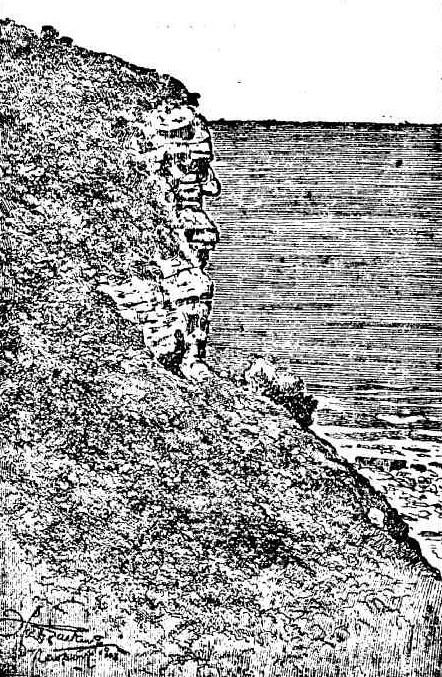 The one shown in our picture (sketched by Mr. Gasking from his camp at Bushrangers'-hill) is Bungan Bungan, artistically stratified in grey and brown layers laid there by the Great Architect's mysterious masons far back in the morning of the world. At the foot of the cliffs are confused, enormous masses of rock, which have fallen from those grim, stern forelands over unnumbered ages, and they are honeycombed and seamed and scarred in many fantastic forms by the waves that break there, as they broke in the Cretaceous Epoch beyond a period of time inconceivable by the human imagination.
The one shown in our picture (sketched by Mr. Gasking from his camp at Bushrangers'-hill) is Bungan Bungan, artistically stratified in grey and brown layers laid there by the Great Architect's mysterious masons far back in the morning of the world. At the foot of the cliffs are confused, enormous masses of rock, which have fallen from those grim, stern forelands over unnumbered ages, and they are honeycombed and seamed and scarred in many fantastic forms by the waves that break there, as they broke in the Cretaceous Epoch beyond a period of time inconceivable by the human imagination.
It is a wild, beautiful, and romantic spot, an ideal seaside resort, combining all the attractions of the coast, mighty headlands commanding splendid views, the open sea on the east the bay of Pittwater lying embosomed in its amphitheatre of hills on the west, green waves and snowy foam, and golden sand, rocks and rocky pools, and shells and seaweed, and transparent sea, upon which you lookdown from the cliffs and see the sharks and porpoises and shoaled fishes as they dart athwart the brine; the pursuer and pursued, the slayer and the slain.
And all day long you behold Kendall's “ships like sheeted spectres, fading down the distant sea," and the blue horizon, brown-barred by the smoke of many steamers, from the small coasters on their way to small bays and little rivers to the mighty ocean leviathans bound for the most distant seaports of the world.
And when, the darkness comes up, see the moving lights of ships that pass in the night, and when the winds are hushed you hear at times the throbbing engines of great steamers on their long Australian coast journey to Cape York and Thursday Island to Java and the East. That beautiful marine region is a fit home for the poetic and artistic soul, expressed or unexpressed, and the solitude in the calm valleys behind the hills, outside the voices of the ocean, ensures to the recluse that peace which passeth all understanding. Australia's Historic Spots. (1908, November 21). The World's News (Sydney, NSW : 1901 - 1955), p. 11. Retrieved from http://nla.gov.au/nla.news-article133968234
BUSHRANGERS HILL
Glorious View from the Summit.
by DOROTHEA DOWLING
It rises in sugar-loaf formation overlooking Newport Beach-a distinct landmark all silhouetted against a backcloth of deepest blue.
Its ascent is by no means difficult, and once the slope is conquered and its rocky summit scaled the sightseer is liberally rewarded with a delightful panoramic view for hiss scant pains. Here he can take his choice between the peaceful beauty of the sleeping river, fringed with mangrove trees and studded here and there with yachts and small crafts, while on his right the vast ocean rises to meet the sky in varying shades of blue and the restless surf pounds on sandy beaches which appeal when viewed from the height, so symmetrically divided from each other by their high green headlands. There is an air of freedom in the fresh salt breezes, and the weary traveller is aware of mingled feelings of peace and exhilaration as the green of the hills and the blue of sea and sky merge and swim before his fascinated vision. BUSHRANGERS' HILL. (1935, November 9). The Sydney Morning Herald (NSW : 1842 - 1954), p. 13. Retrieved from http://nla.gov.au/nla.news-article17227564
Early Land Sales for Mona Vale to Bungan Beach - the Hills and Headlands and Surrounds
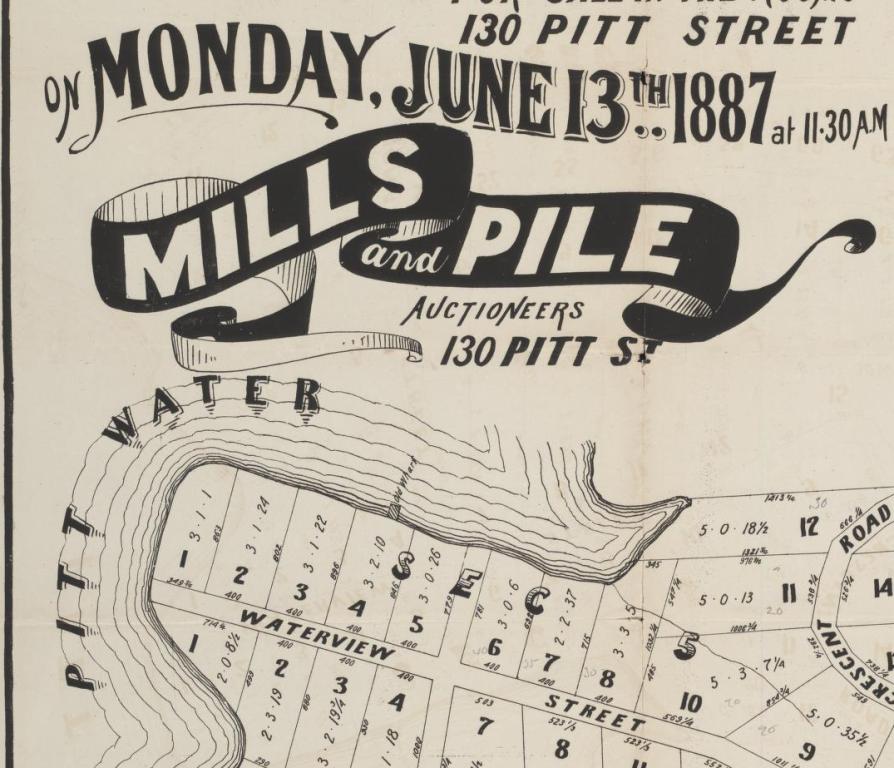
Mona Vale, Pitt Water [i.e. Pittwater] [cartographic material] / for sale in the rooms, 130 Pitt Street on Monday June 13th 1887 at 11.30 a.m., Mills and Pile, auctioneers, 130 Pitt St. MAP Folder 103, LFSP 1553. Courtesy National Library of Australia.
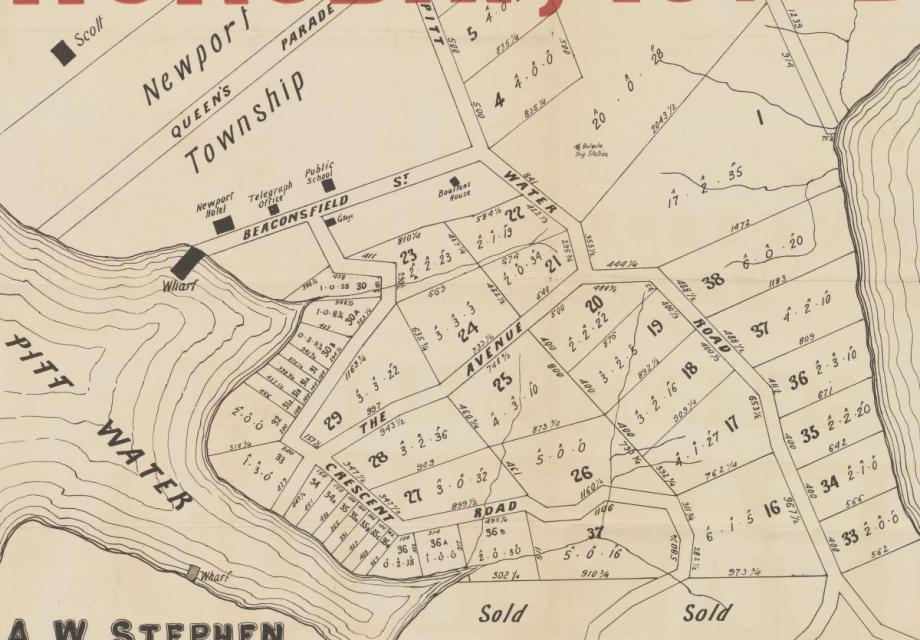
This map is interesting as, although Mr. and Mrs Pollock already owned land here, as per the above article of 1905 naming her husband, they do not appear on this 1900 to 1910 'for sale' lithograph which does list other land owners also named:
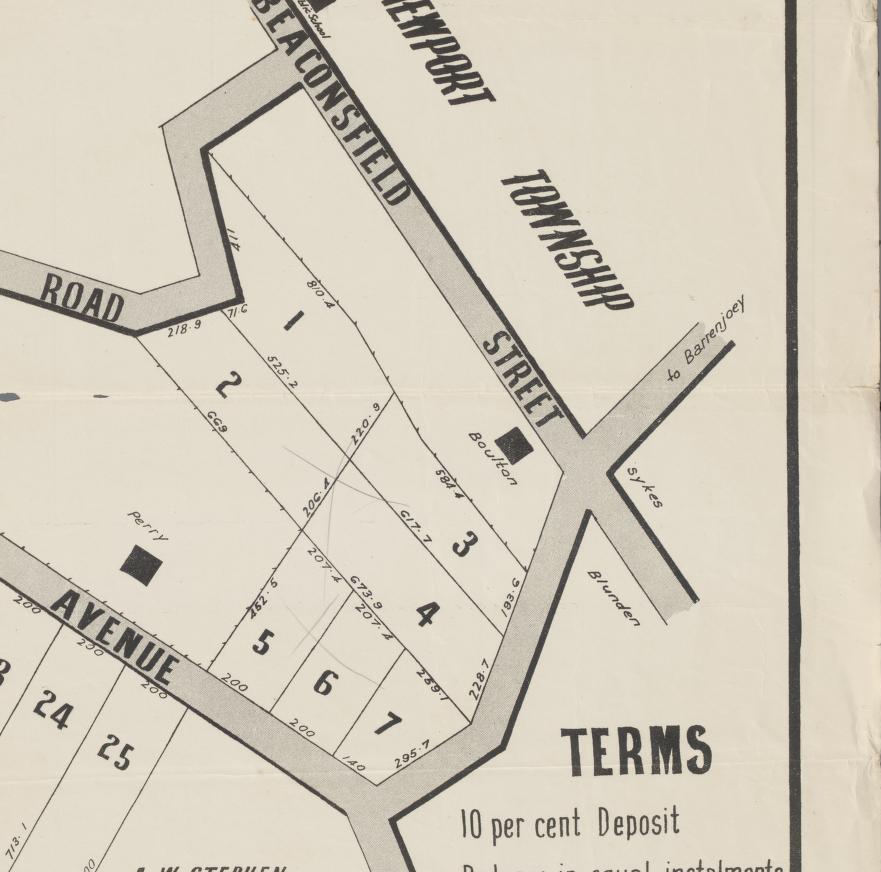
Sales plan for land in Mona Vale, New South Wales. "A.W. Stephen, licensed surveyor RPA, 47 Castlereagh Street". Sales plan of Mona Vale estate, Pittwater. Mona Vale [cartographic material]. Mona Vale estate, Pittwater [cartographic material] 1900 - 1909. MAP Folder 103, LFSP 1554. Courtesy National Library of Australia.
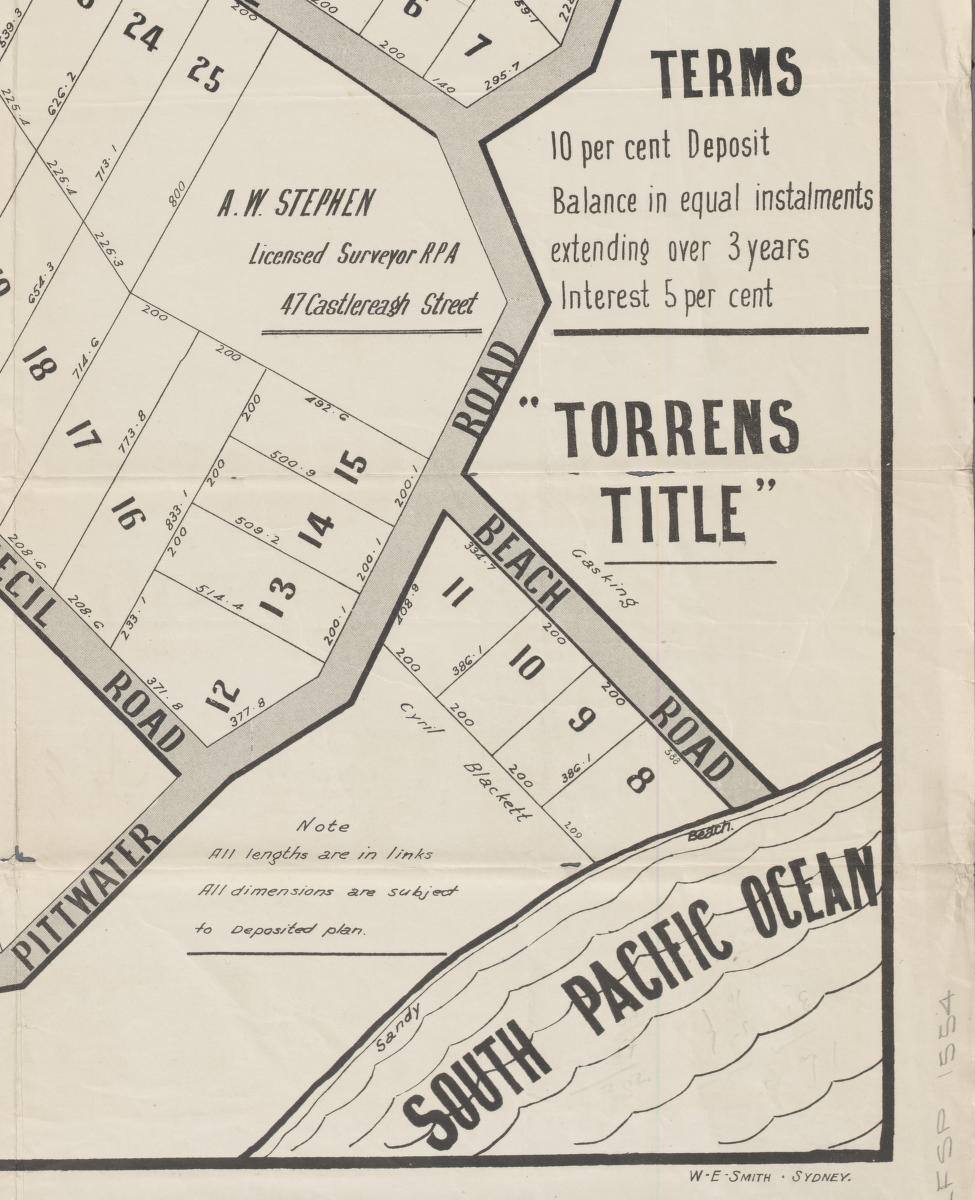
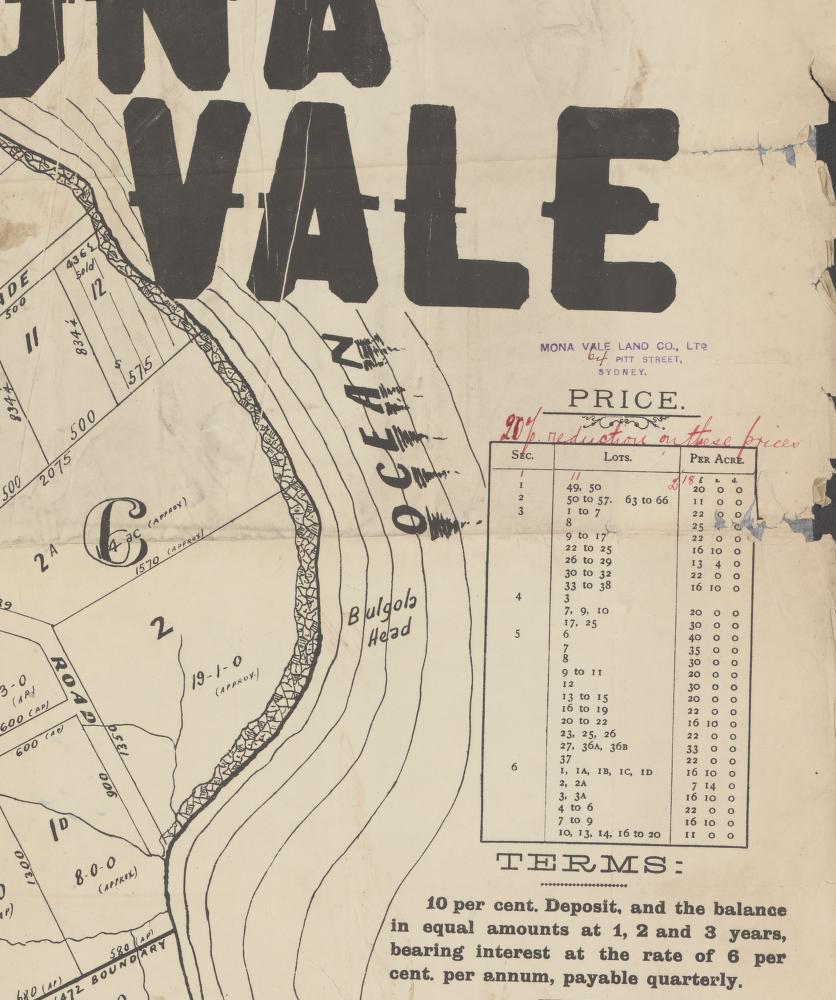
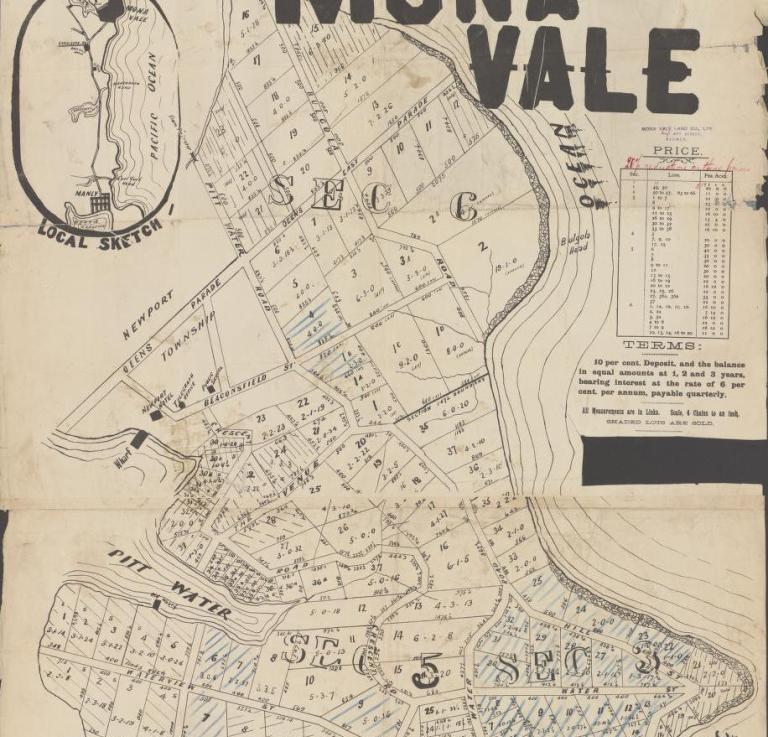
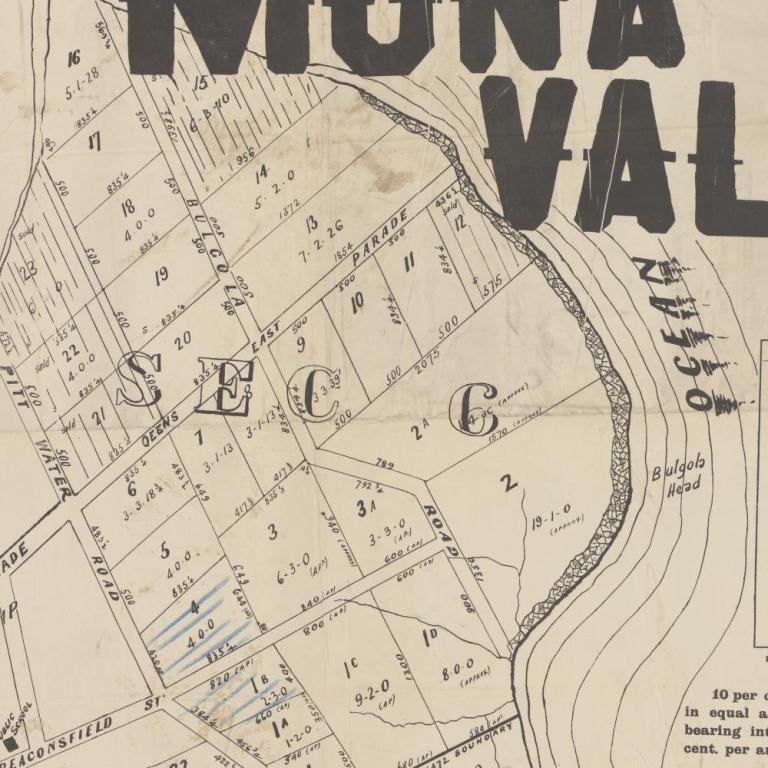
New Tourist Resort.
Bungan Head, Newport is no longer an exclusive lone hand promontory only visible to the public from a distance. It is now part of a public domain, and has opened out one of the tourist drives of the district, as well as made available one of the finest areas for seaside residences that the most artistic taste could desire. The Lookout is part of the reserve dedicated for public use, which extends on the high land, as well as along the foreshore from Bungan Beach right round to the Little Reef Beach. From the Lookout and Indeed, from any of the sites on the headland a view of unsurpassed charm can be obtained in ordinary weather, while a scene of great grandeur Bungan Head road skirts the northern and southern slopes of the headland, and leads to the bluff from both sides, On the southern slope the view embraces the Intervening headlands. Little Reef, with glimpses of the beaches to the South Head Light. Looking south-east there are the ships and boats that pass to and from, as well as in and out of Sydney Heads. Away south-west stretch the terrace of hills that rise from Manly to French's Forest, Gordon, Pymble, to Kuringai Chase. On the northern slope the view along the coastline extends to Cape Three Points, taking in a full view of Newport Beach, a, portion of Bilgola Beach, and headland; the pleasing side of the South Head of Broken Bay, together with the hilly lands that melt into the sky In the distance. To the west, right In the foreground, and mount. Loftus and Bayview, revealing part of Pittwater as well as apart of Kuringai Chase. Tin north- east aspect Is bounded by the Pacific horizon.
Away from the Crowd.
Bungan Beach, not being observable from the main road, makes it private and select. Little Reef is somewhat the same. They are both little known at present. Bungan Beach is excellent for surfing. Bathing sheds are provided by the Warringah Council. Little Reef is not suitable for bathing. It Is an ideal rambling ground, and has a good rock fishing spot.. All the building sites have been u arranged that the maximum advantage of the natural position of the land has been obtained. Land that possesses great natural beauty. as well as lbs surf and beach. Is a magnet for all time, especially when It Is within easy reach at calm water for boating and sailing. In the past, before the call of the surf, mod people were content to spend their lives In the city and suburbs. The slow means of travel were partly responsible for It, but the era of the motor car has passed that out. Even aircraft may bring Bungan Head within a quarter of an hour of the city. Lance Gidding will offer the Bungan Head Estate on Boxing Day (Monday week). Building and Building Land. (1920, December 15). Evening News (Sydney, NSW : 1869 - 1931), p. 8. Retrieved from http://nla.gov.au/nla.news-article117298393
Bungan Head Estate attracted a crowd of buyers on Boxing Day. Bidding was brisk and competition keen. The auctioneer, Mr. Lance Giddings of 115 Pitt Street, had no trouble disposing of over £5000.00 worth of allotments. It is expected that numerous private sales will be affected during the week. LAND SALE AT NEWPORT. (1920, December 28). Evening News (Sydney, NSW : 1869 - 1931), p. 4. Retrieved from http://nla.gov.au/nla.news-article117296291
Mr. Lance Giddings sold on Boxing Day 40 allotments In the Bungan Head Estate, Newport, on behalf of A. G. and M. A. Yewen, at prices ranging from 25/ to £3/10/ per foot. The total of the sales amounted to £5293. REAL ESTATE. (1921, January 8). The Sydney Morning Herald(NSW : 1842 - 1954), p. 9. Retrieved from http://nla.gov.au/nla.news-article28090109
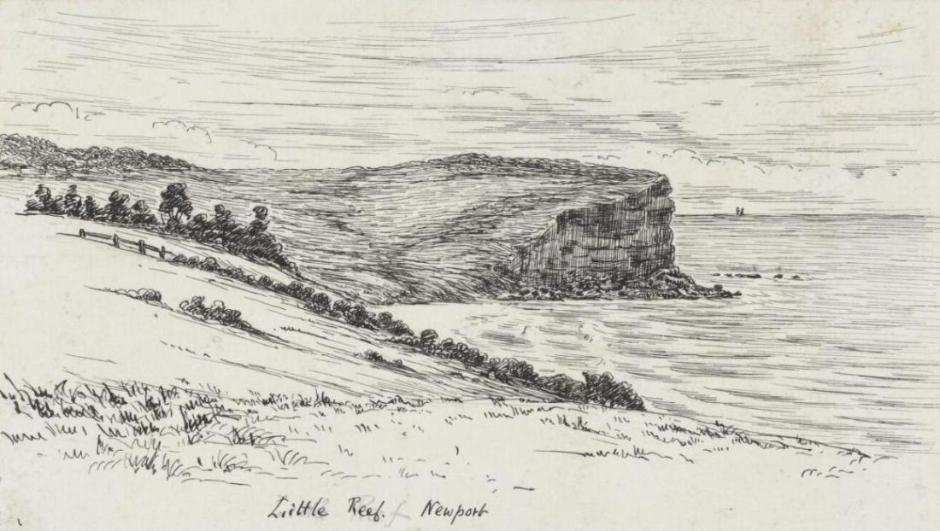
Little Reef - Newport, Circa 1885 by H. J. (Harold John)Graham, Courtesy National Library of Australia: PIC Volume 1009 #R9866/174A
A Windswept Beach and Headland Garden
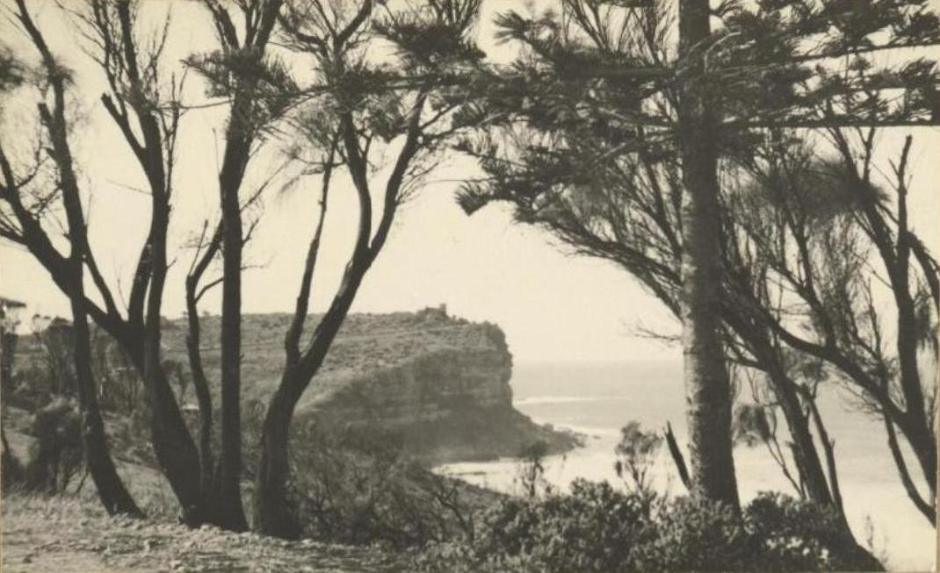
Above: Bungan Head, New South Wales, ca. 1935 by E. W. (Edward William) Searle,PIC P838/13 LOC Drawer Q43-E.W. Searle collection of photographs, courtesy National Library of Australia.
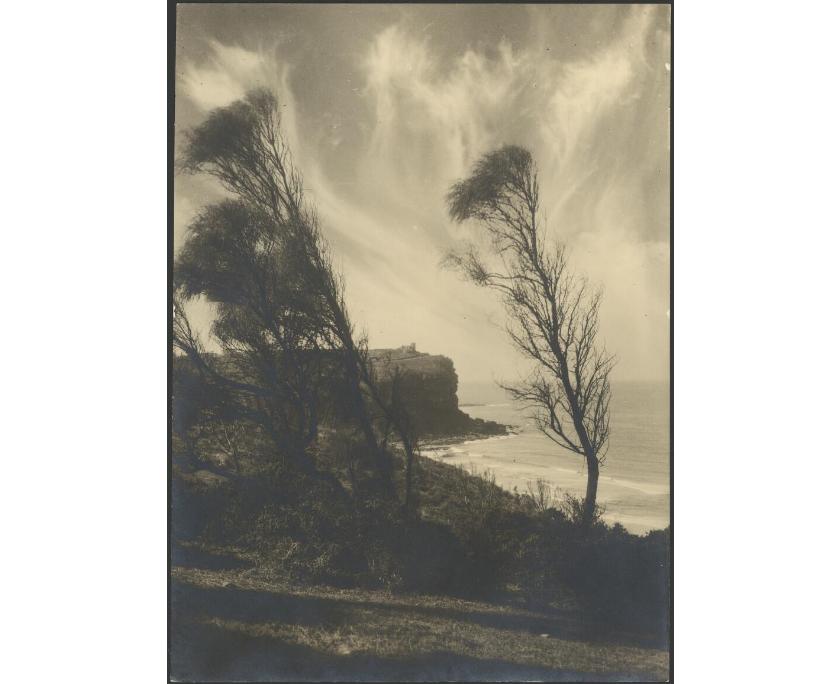
Above: Bungan Head, New South Wales, ca. 1935 by E. W. (Edward William) Searle,PIC P838/343a LOC Drawer Q43-E.W. Searle collection of photographs, courtesy National Library of Australia.
The above photograph appears in the below newspaper report a few months later, from a slightly more treed angle, and is one of a few Mr Searle took in and around and over Newport at the same time:
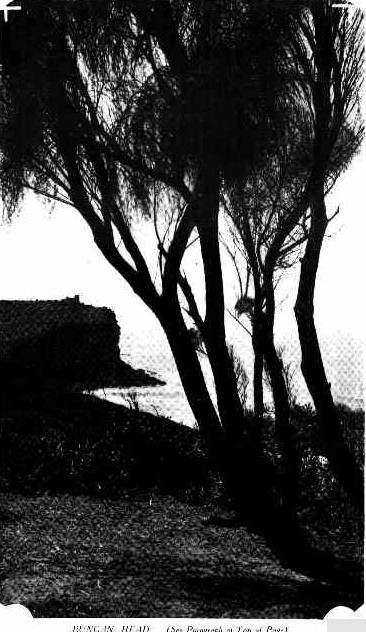
Bungan Head is the headland on the Sydney side of Newport, and this view of Bungan Beach shows the headland with the medieval-looking castle erected on it some years ago. The beach is a charming secluded spot, though quite close to the main road, and can easily be reached by a rather precipitous path. No title. (1936, April 22). Sydney Mail (NSW : 1912 - 1938), p. 51. Retrieved from http://nla.gov.au/nla.news-article160637239
Below: Bungan Head, New South Wales, ca. 1935 by E. W. (Edward William) Searle, PIC/P838/2549 LOC Album 109/18, courtesy National Library of Australia. Title devised by cataloguer based on information from inscription.; In: Australia beautiful, New South Wales.; Part of the E.W. Searle collection of photographs.; Inscriptions: "38 Bungan Head (NSW)"--In black ink right of image.; Condition: Slight yellowing.; Also available in an electronic version via the Internet at: http://nla.gov.au/nla.pic-vn4556468
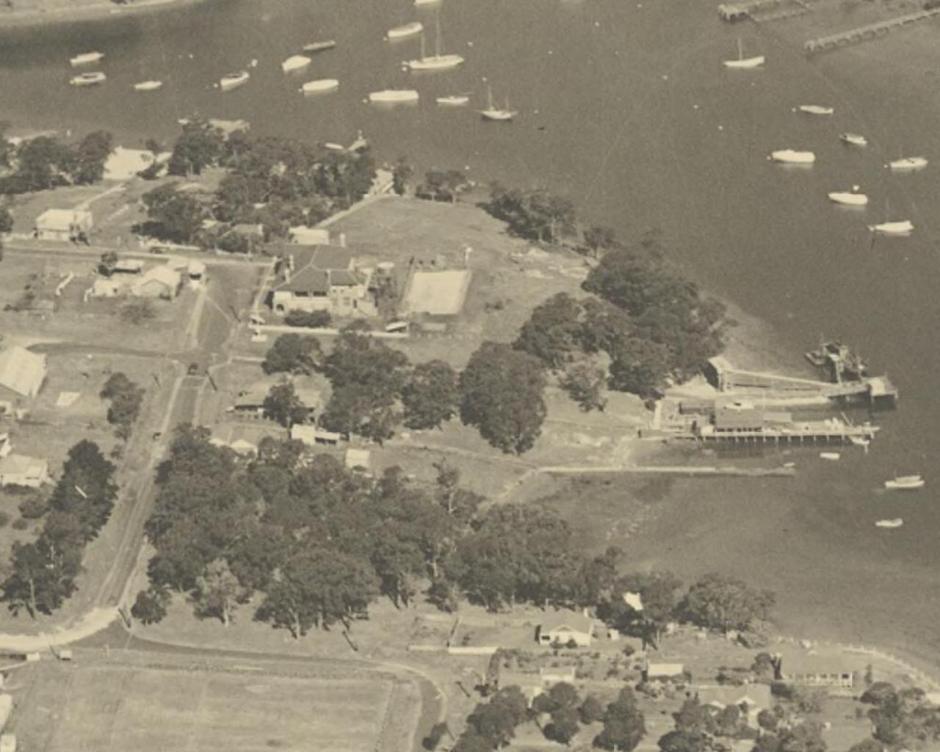
Aerial view of Newport bay circa 1935 by E. W. (Edward William) Searle, PIC P838/838a-b LOC Album 1124/9, courtesy National Library of Australia.
Many changes have taken place in Pittwater Landscapes during the last few hundred years - waterfronts have been filled in or excavated, watercourses that once flowed have been enclosed in drains or disappeared altogether:
He saw vast heaps of oyster shells 20 and 39 feet in height, and they were brought Into Sydney in boats and burned for lime.
The present-day Barranjoey he calls "Barranjull," and Narrabeen was "Narrabun," The rocky .points from Manly to Broken Bay he called "Farrell's Head," "Hole in the Wall." "Turrimetta." "Bungan," and "Bulgoula." He found two tough old weather-beaten fishermen living in a hut at Barranjull and taking their fish to Sydney. He saw the blacks fishing off the rocky points with very primitive lines, using starfish bait, one of them catching six big schnapper in half an hour.
He took one of the lines to try his luck and got his line caught in the rocks first throw, in deep water, where it remained until next morning when the owner dived and released the hook. He found the blacks more expert at fishing than any whites. The whites in the early days called native bears "monkeys." and he reminds us that Hyde Park was half a mile in length and a quarter in width, and- was then at the "back of the town but he Predicted that it "might one day be in the centre!" Story of Govett's Leap. (1922, September 30). The World's News (Sydney, NSW : 1901 - 1955), p. 20. Retrieved from http://nla.gov.au/nla.news-article128669556
WARRINGAH.
The Warringah Shire Council experienced difficulty in 1934, mainly because of the rapid development in the shire. The 13 beaches in the shire constituted both an asset and a liability. While they attracted thousands to the shire and had been largely responsible for its progress, they also entailed a big expenditure on necessary improvements and conveniences. New beach buildings were erected at Newport, Avalon, Mona Vale, South Narrabeen, and North Curl Curl, at a total cost of £5800. Extensions were being made at North Narrabeen, and £2000 was being spent on a modern building at Harbord. The clubhouse at Collaroy would shortly be extended. In addition, rock baths were provided at North Narrabeen.
An effort was made to secure the surroundings of Deewhy Lagoon as a public reserve.
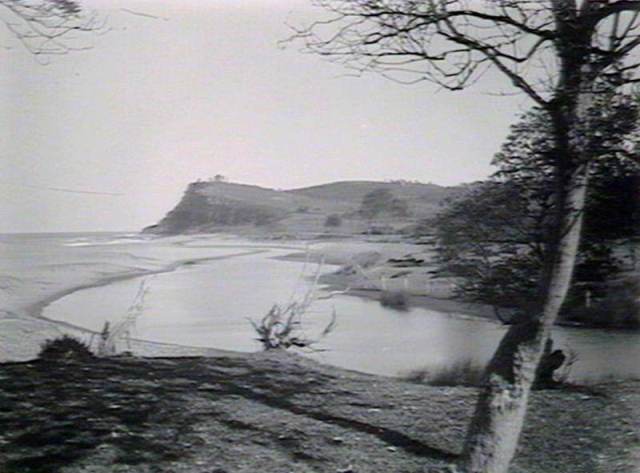
Farrell's Lagoon, 1912. N.S.W. Government Printing Office image d1-12148r, courtesy State Library of NSW.
The Minister for Lands gave a sympathetic reply to a deputation's request that the Government should resume the area. The matter went to the Cabinet for consideration. Farrell's Lagoon at Newport was converted into a recreation area, as an unemployment relief work. Reserves throughout the shire had been improved.
The problem of communication between the city and the shire was one of the problems of the council. The Main Roads Department carried out work on Pittwater-road, Warringah-road, and Condamine-street, and the roads connecting with Roseville. These, it was stated, were providing speedier access from the northern suburbs to the beaches. It was hoped that a scheme would shortly be carried out to make a marine drive from Manly through Harbord, Curl Curl, and Deewhy.
Building in the shire continued to improve. In the quarter ended September 30 last, the value of buildings approved was £35,595, the largest quarterly total in the history of the shire. THE COUNCILS. (1935, January 2). The Sydney Morning Herald (NSW : 1842 - 1954), p. 4. Retrieved from http://nla.gov.au/nla.news-article28022988
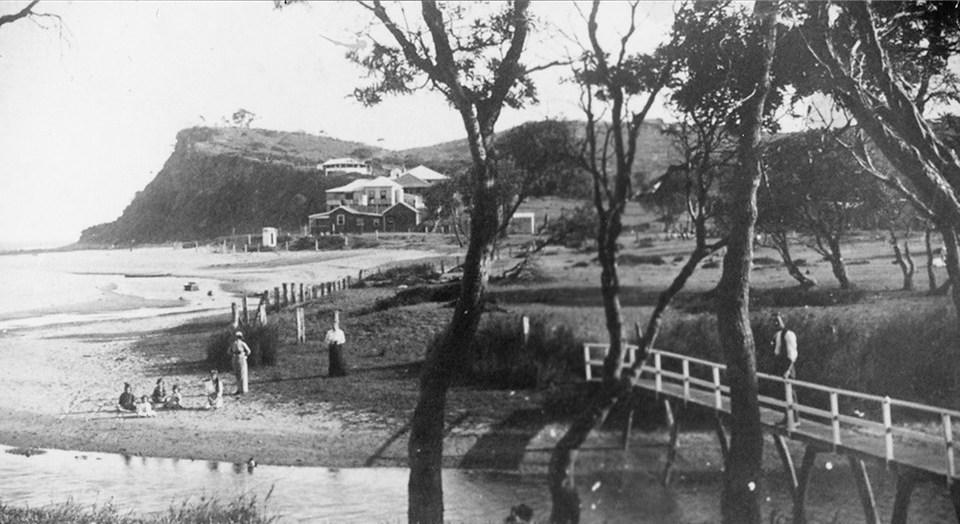
Bungan Beach is noted for closeness to the original wild landscape of our coastal areas. The landscape is termed Coastal Scrub, Cliff Face Open Heath (including Littoral rainforest) and Coastal Closed Heath communities. It is peregrin falcon, powerful owl, bandicoot and Deudorix butterfly territory. These habitats are also attractive to small birds
During an assessment commissioned by Pittwater Council, it was found the watercourses here were:
The natural watercourses which flowed from the Beach Road area northward behind the dunes, joining up with Bungan Creek and flowing into the ocean near the surf club were blocked by the sand dune, just north of the gully in the dunes at the centre of the beach. The construction of a dune now causes the water to pond behind it and water percolates through the sand rather than washing out the beach. Bungan Creek (stormwater) is now the only creek that flows through the dunes at the northern end.
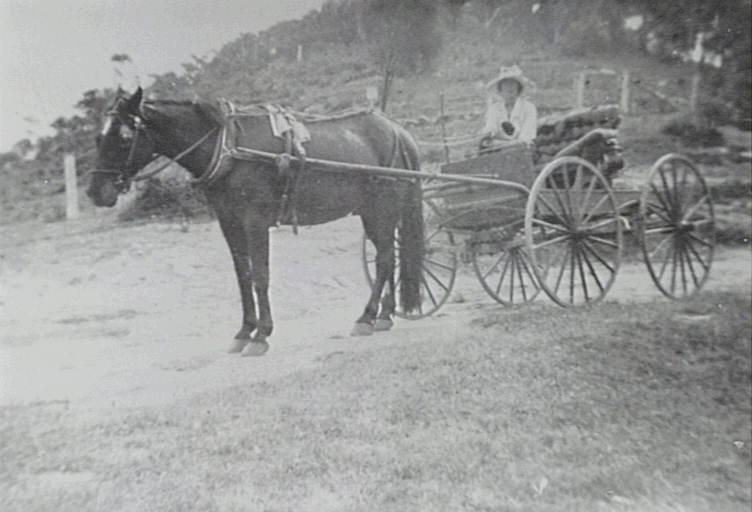
1918, English, Photograph edition: Elsie Pollock (sister of Betty Morrison) in horse drawn cart at corner of Karloo Parade and Bungan Head Road. Local History Resource Unit.
Lots 1 and 2 in DP 230883, and lots Lots 34, 35 and 36 in DP 12994 and Lots 4, 5, and 6 in DP 26951 which comprise the bulk of the Reserve, were donated to the State of NSW by the owners Elsie Pollock and her sister, Betty Morrison in 1964 and 1976 respectively, for the purpose of preserving the natural bushland, fauna and natural scenery of Bungan. Elsie Pollock acquired these lots prior to the First World War.
A small timber cottage built and owned by Mrs Pollock was constructed in 1914 on Lot 2 of the reserve near Myola Road. The cottage incorporated a chimney built from local stone. This land has more recently been transferred to Pittwater Council. The cottage has been removed and is being returned to bushland in accordance with the wishes of Mrs Betty Morrison. This occurred in 2001.
Their wish was for the land to be used for open space and the protection and encouragement of flora and fauna.
From the 1950s to the 1970s lots were acquired by Warringah Shire Council and the State Planning Authority of NSW for the purposes of creating the Bungan Beach Reserve. From the 1970s to the present, Warringah Shire Council and now Pittwater Council have undertaken a range of works in the reserve including improvements to access paths, dune stabilization works and bush regeneration works.
Over the years, residents of the area have been actively involved in the care and management of the reserve, giving local residents a great sense of ownership and pride. Betty Morrison (nee Pollock) was an active conservationist and along with other local residents formed the original Bungan committee
In accordance with the wishes of Mrs Betty Morrison who donated 8 lots of the reserve, the cottage has since been removed and the site is being restored as bushland. The nature of the cottage in the landscape has been documented and archived in accordance with State Government Guidelines.
In memory of Mrs Morrison’s generosity the 8 lots bequeathed by her have since been renamed Betty Morrison Reserve. This name was formally recognised by the Geographical Names Board in August, 2001.
This work has been carried forward by the Friends of Bungan Beach, a community bushcare group that was established in 1971. We are rehabilitating and preserving the Bungan Beach and Betty Morrison Reserve at Newport, Sydney.
Volunteers meet each 4th Sunday of the month (not Dec,Jan) and remove weeds from the dunes and the endangered coastal littoral rainforest. Pittwater Council supports this activity.
From the Friends of Bungan Beach website:
It began in 1969 when Mrs Betty Morrison (who at the time was living on what now is Betty Morrison Reserve), formed the Bungan Beach Flora and Fauna Committee. In 1970 the Committee received its first grant of $200 from Warringah Shire Council to restore the lands native coastal plants, and improve fauna habitat.
In 1980 the committees name was changed to Bungan Beach Reserve Management Committee, and Bushrangers Hill Reserve was added to the area of care.
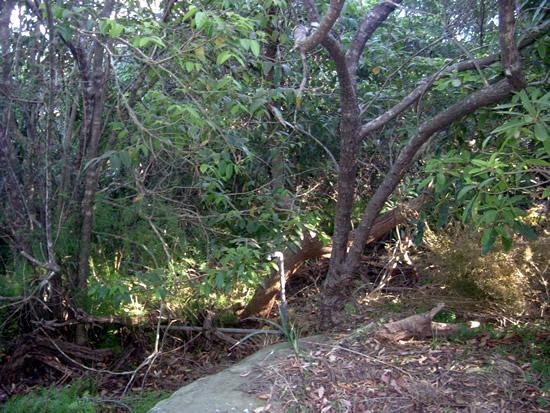
Karloo Central Track 2009
The committee continued to work with Warringah Shire Council and then Pittwater Council when it was formed in 1992. In 1995 the committee was renamed the Friends of Bungan and in 1999 was incorporated as a tax exempt charitable institution in order to facilitate the application and receipt of Government grants and to act as an independent body separate from Council.
Our objectives are :
• To protect, preserve, and enhance the natural environment of Bungan including its local native vegetation and fauna,watercourses, beach and rock platform
• To assist Pittwater Council to manage Bungan’s natural environment in a manner which is consistent with the policies and strategies of Bungans Plan of Management
• To encourage the local community, Pittwater Council and the Governments of Australia to adopt and implement policies and works which will conserve, sustain and enhance the natural environment of Bungan Beach
• To raise public awareness of the conservation value of Bungan’s Natural Environment and the threats to its long term sustainability
To encourage an orderly and proper physical, environmental and socio-economic planning and management for the well-being of the people and all life within Bungan.
Friends of Bungan , with the support of Pittwater Council, have been successful in receiving grant funding through various bodies such as Envirofund, the Environmental Trust, Rivercare, Coastcare, Hawkesbury and Nepean Catchment Management Authority, and Pittwater Environment Fund. This has enabled us to employ professional bush regenerators to restore approximately 80% of the 8.65 hectare Reserve.
The Friends of Bungan volunteer their time to help maintain the Reserve by meeting at 9am every fourth Sunday of the month, when we undertake weeding and enjoy morning tea and companionship. The location varies according to need or weather, and is posted on the website.
All that is required of a volunteer (members and non-members) is that they wear protective gardening clothes and shoes. Expertise, morning tea, tools and equipment are supplied by Pittwater Council.
Greater Sydney Land Services have rewarded us with another grant to remove weeds from the North Western corner of Bungan and Betty Morrison reserve. This will commence in January 2016 and finish in April 2017.
Join in or find out more at: www.friendsofbungan.org.au/about-us
Landcare stated in 2010, of the Friends of Bungan Beach:
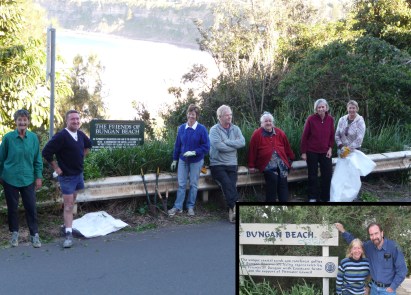 The work of Friends of Bungan, in collaboration with local Council, in restoring the natural heritage area has contributed to the improvement and sustainability of the untamed coast on Sydney’s northern beaches.
The work of Friends of Bungan, in collaboration with local Council, in restoring the natural heritage area has contributed to the improvement and sustainability of the untamed coast on Sydney’s northern beaches.
Friends of Bungan have played a major role in the conservation and management of the 7.5 hectare Bungan Beach Reserve. Like many reserves bordered by residential development, the bushland, dunes and escarpment of Bungan Beach Reserve are impacted by weed invasion, stormwater run off, damage from informal tracks and dumping of garden waste. Although it was initially difficult to make inroads into the heavily weed infested reserve, the group has shown tenacity and determination in restoring the natural heritage area which includes the nationally endangered Littoral Rainforest ecological community.
The group works closely with local Council to develop strategies and provide recommendations for activities. The Council has provided ongoing support through its bushcare program and some additional funds for professional bush regeneration, resulting in a substantial improvement in the condition of the reserve in the last 10 years.
Between 30 and 50 families are members of the Friends of Bungan group at any one time.The group has contributed more than 1800 hours of volunteer labour and has continued to encourage broader community involvement through annual newsletters, signage, field days, annual Clean Up Australia Day events and through support of Council initiatives such as ‘Asparagus Fern Out’ days. The production of a brochure, annual newsletters, signs and field days have educated the communty about the issues and the works required to address them.
With a carefully staged and planned works program, the group has been successful in obtaining six grants and has also contributed significant private sponsorship funds with the total value reaching $348,521. This allows the group to employ support from professional bush regeneration teams ensuring that primary works are adequately maintained.
With the dedication and ongoing commitment of the Friends of Bungan, the Bungan Beach Reserve will continue to provide a taste of untamed coast right in the heart of Sydney’s northern beaches.
The Friends of Bungan project is one of 88 finalists in the National Landcare Awards to be announced in Canberra on 24 June 2010. '
THe bushcare group have also been supported in the work by the Pittwater Environment Foundation.
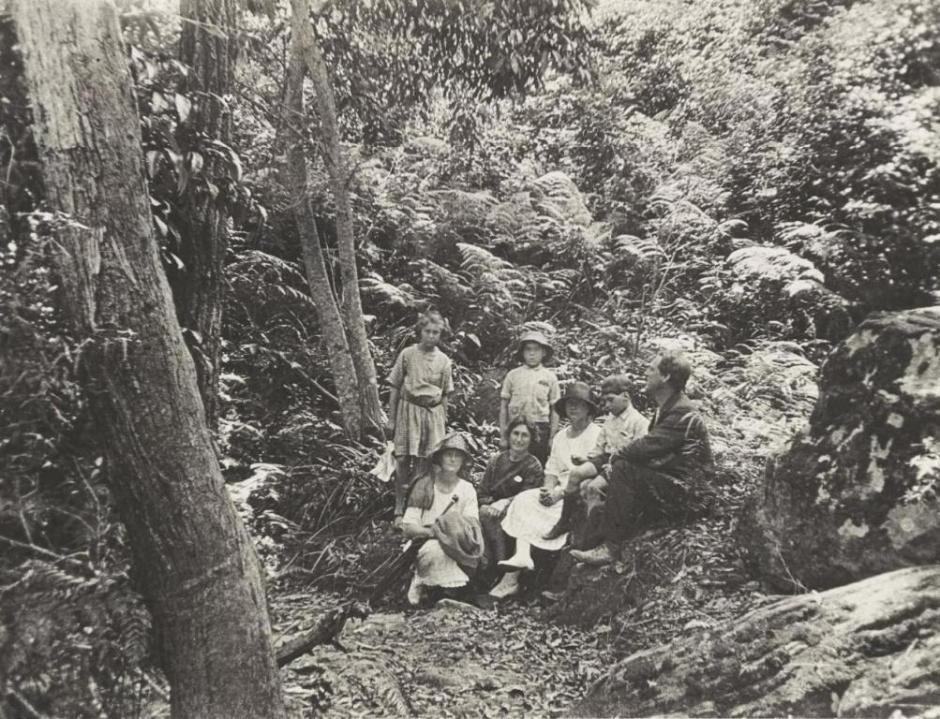
'On A Bush Track - Newport, 1924' ; photo by Olive Cotton. Image No.: PIC P1666/E LOC R21, courtesy National Library of Australia.
Sheer Cliffs: A Bungan Feature
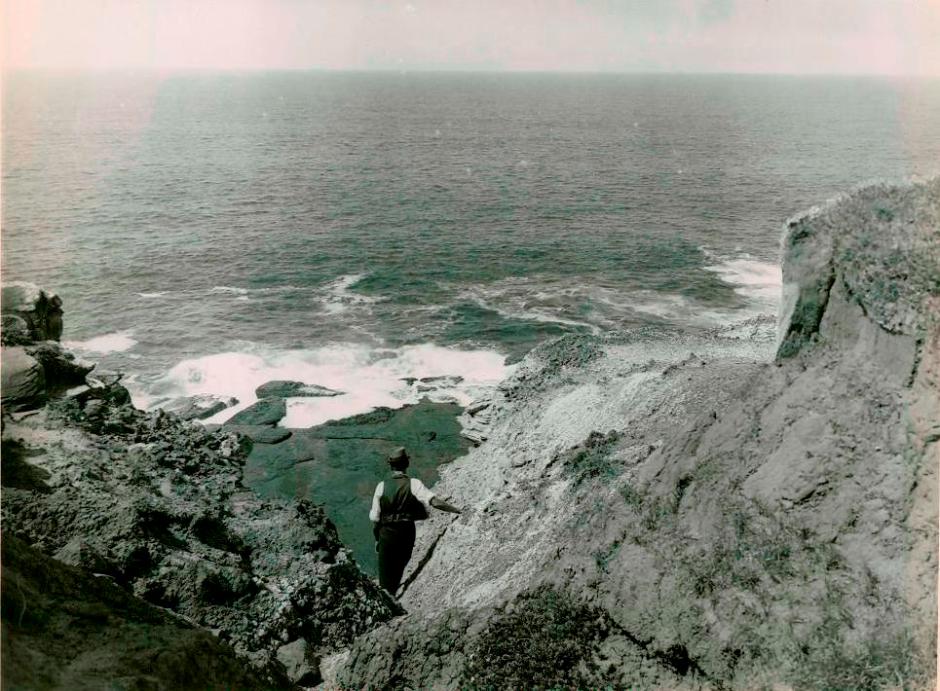
Caption: 'Ocean Rocks, Newport' but is Avalon- near St Michael's Cave: Illustrates cliff drops rock of one hundred years ago courtesy NSW State Records, circa 1890 -1905 Image no 4867
The winding road and rocky cliffs of Bungan, particularly the corner on which this landmark stands, have been the site of numerous accidents and early Council records are filled with requests from the residents of Bungan Beach to 'please repair': These cliffs are between 40 and 50 metres and make access to the beach difficult apart from on a thin steep track at the north end of the beach
Mr. Albers, of Bungan Castle, and his visitors saw a few:
DEATH WITHIN INCHES
CLIFF-TOP PERIL, Bolting Motor-cycle—- SYDNEY, Monday.
It must have been Providence that saved two men, William Wise, of Wakefield-road, North Manly, and Thomas Plows, of Corrie-road, North Manly from being dashed to pieces at the bottom of a cliff yesterday.
An eye-witness of the occurrence; 'V' was with some friends on the tower of Bungan Castle, Newport, when he: noticed a motor cycle and side-car, with two men, coming down the hill leading to the castle. After admiring the view, Wise, who was driving, started the engine. The motor cycle had only traversed* a few yards when it struck a boulder. The cycle skidded, and Wise losing control, the machine dashed towards... the edge of the cliff. There are a few trees almost on the edge of the cliff, and the cycle struck one of them.-*.' It bounced back, but continued in Its headlong rush. Plows, who was riding in the side-car, made a gallant. - attempt to grab hold of the wheel with his hands, but he had them severely gashed. The watchers on the tower were horrified. It looked as if nothing but a miracle could save the unfortunate men from going to their death. The miracle happened. The cycle .struck& second tree, but still continued in its mad rush towards the 200 feet drop.
TERRIFIC SMASH A third and final tree before the edge was reached barred its progress. The cycle banged into the tree with a terrific smash. Wise was thrown off. Ho managed to grab hold of the back of the cycle, the front wheel of which was hanging over the cliff. Plows jumped out, and ran up to the castle for assistance. Just as assistance arrived, Wise collapsed. The motor cycle, when released from his restraining hand, fell over the cliff, and was dashed to pieces on the rocks below, while Wise lay where ho was, within inches of death. It was a miraculous escape from death, but the men did not get off scot-free, both of them having to treated by the ambulance, which afterwards conveyed them to the Manly Hospital. DEATH WITHIN INCHES. (1923, July 23). The Newcastle Sun(NSW : 1918 - 1954), p. 5. Retrieved from http://nla.gov.au/nla.news-article163214501
Girl Cliff Victim.
Edna Wild, 15, a visitor from Jerry's Plains, who fell 12 feet onto the rocks at Bungan Head, near Newport, was reported from the Manly Hospital on Wednesday to be in a serious condition, suffering from a fracture of the skull. Girl Cliff Victim. (1930, February 28). The Muswellbrook Chronicle (NSW : 1898 - 1955), p. 5. Retrieved from http://nla.gov.au/nla.news-article107629547
Cars OVER CLIFF:
Car Over Cliff At Mona Vale
A brand-new English roadster rolled over a 150ft cliff at Bungan Head, near Mona Vale, last night. A few minutes earlier the driver, Army Captain James John Lachlan, 29. of Chowder Bay, Clifton Gardens, and a friend, a Miss Mackie, had got out of the car. When Captain Lachlan saw the car rolling towards the cliff he leapt in front of it.
He was unable to stop the car, which ran over his left foot. Miss Mackie tried to apply the handbrake, but could not stop the car. Pieces of the car were strewn over a 50-yard radius. ' The chassis and engine were shattered and flattened by the impact. The Pittwater branch of Manly District Ambulance treated Captain Lachlan for injuries to his foot. Car Over Cliff At Mona Vale. (1950, February 17). The Sydney Morning Herald (NSW : 1842 - 1954), p. 3. Retrieved from http://nla.gov.au/nla.news-article18147302
PERIL ON CLIFF - Police Bring Body Up
Eight policemen risked their lives last night as they climbed 300ft down a cliff near Newport to recover a young man's body. The dead man was Noel Davis, 25, of Kirribilli Road, Kirribilli, who had just completed his engineering course at the University of Sydney. The rescuers belonged to Sergeant George Ware's Cliff Rescue Squad and Manly, Narrabeen, and Mona Vale police.
Yesterday afternoon, Mr. Adolph Albers, who lives in Bungan Castle, at the crest of Bungan Head, saw that the fence separating the road from the cliff edge had been smashed down and that a car was hanging over the edge of the 300ft cliff. Late in the afternoon police saw a man's body lying on the rocks near the water's edge.
POLICE THEORY
Tyre tracks showed that Davis had backed his car through the gate of Bungan Castle and the car had then run straight forward across Bungan Head Road to the cliff edge. Police believe that Davis got out of the car, fell over the edge and was killed.
Sergeant Ware and Constables White, Gearon, Wicks, Charman, Buttel, Matheson, and Pelling decided to climb to the bottom. They went about 200 yards along the road and climbed down, reaching the bottom of the cliff about a quarter of a mile from the body. One man slipped between two big boulders and had to be extricated.
Davis's battered body was lashed into a folding stretcher and Sergeant Ware and some of the police climbed back to the top of the cliff and dropped a rope. This was tied to the stretcher which was hoisted to the cliff top.
Picture, page 4.
SEARCH FOR BODY Sergeant Ware, of the Police Cliff Rescue Squad, using a searchlight to find the body of a young engineer at the bottom of a 200ft cliff near Newport last night. He and other members of the squad recovered the body. (Story on page 1.) PERIL ON CLIFF. (1950, November 1). The Sydney Morning Herald (NSW : 1842 - 1954), p. 1. Retrieved from http://nla.gov.au/nla.news-article18184027
Situated on the edge of the cliff, and part of the 'scenic drive'soon after the road was made, one tragedy at least is recorded;
Man Falls 200ft. to death on rocks
The police cliff rescue squad shortly before midnight last night recovered the battered body of a man from jagged rocks 200 feet below the cliff fop at Bungan Head, near Newport.
Yesterday afternoon police found a sedan car, its front door open, on the brink of the cliff top, over which its front wheels Were hanging. The car had crashed through a wooden fence on the Bungan Head scenic drive, and plunged 20 feet through bushes to the cliff edge, where its back axle stuck on a tree. When they hauled the car back on to the road and had it towed to Manly Police Station, police did not know there had been a tragedy. They thought the car had been stolen, arid that the thieves had tried to wreck it by running it over the cliff. Early this morhing police established that the dead man was either the owner or the brother of the owner of the car. They know the dead man's name was ' Davis, and that he lived in Kirribilli Avenue, Kirribilli. Two brothers, Noel Davis, 25, and Jefferson Davis, 22, live at that address. Early this morning police had been unable to contact anyone at the house, or contact any relatives.
Near castle
Police have been unable to establish how Davis plunged to his death. The car crashed through the fence immediately in front of Bungan Castle, well-known scenic home built by Mr. Adolph Albers more than 30 years ago.
Mr. Albers said last night: "The car went through the fence about 1 p.m. "I came home shortly afterward and went to investigate. "The front door of the sedan was open, the ignition was switched on, and the brake was off. The engine was not running. --"I found a man's sports coat on the front seat.
"In the inside pocket, there was a driving licence in the name of J. R.Davis. a letter from the Taxation Department, addressed to J. R. Davis, 55 Kirribilli Avenue, Kirribilli, and £5. "I am certain the young man-tried to turn his car in my steep driveway, which runs off the very narrow road. "He must have. backed the car up, then lost control as it hit a steep rut running down. It would have been across the road and through the fence in a fraction of a second. "I think the driver was either thrown out when the door flew open as the car hit a tree, or was stunned by the impact and stepped out, dazed and helpless.
"Loose pine needles make the ground there slippery and he would have been unable to keep his feet , before plunging over the cliff -edge less than five feet away." Mr. Albers said. Constable Gearon (Mona Vale) saw the body on the rocks, and -Detective H. Ballerun, Constables N. White (Narrabeen) , and Gearon later, tramped and climbed 400 yards around slippery and jagged rocks from Bungan Beach to the body. Police took the body to the City Morgue.
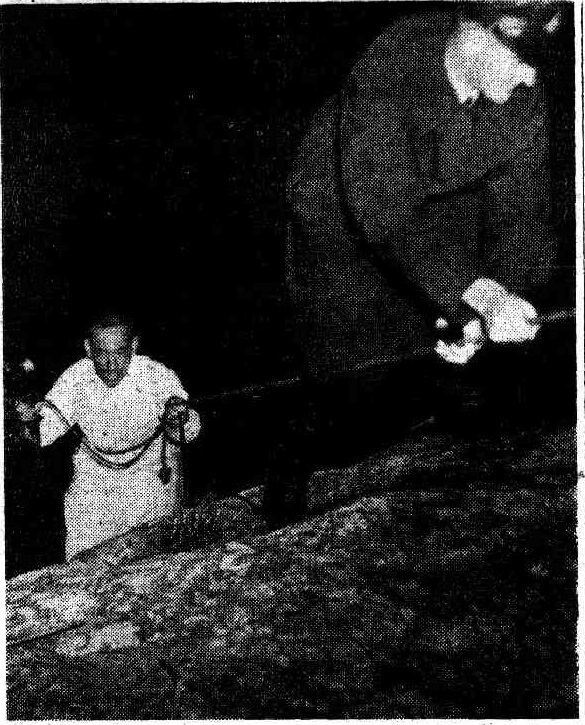
Cliff descent for body - CONSTABLE N. WHITE, of Narrabeen, and Sergeant H. Ware (in white overalls) of the Cliff Rescue Squad, descending 'the cliffs at Bungan Head, near Newport, last night to recover the body of a man.
Man falls 200ft. to death on rocks (1950, November 1). The Daily Telegraph (Sydney, NSW : 1931 - 1954), p. 5. Retrieved from http://nla.gov.au/nla.news-article248569955
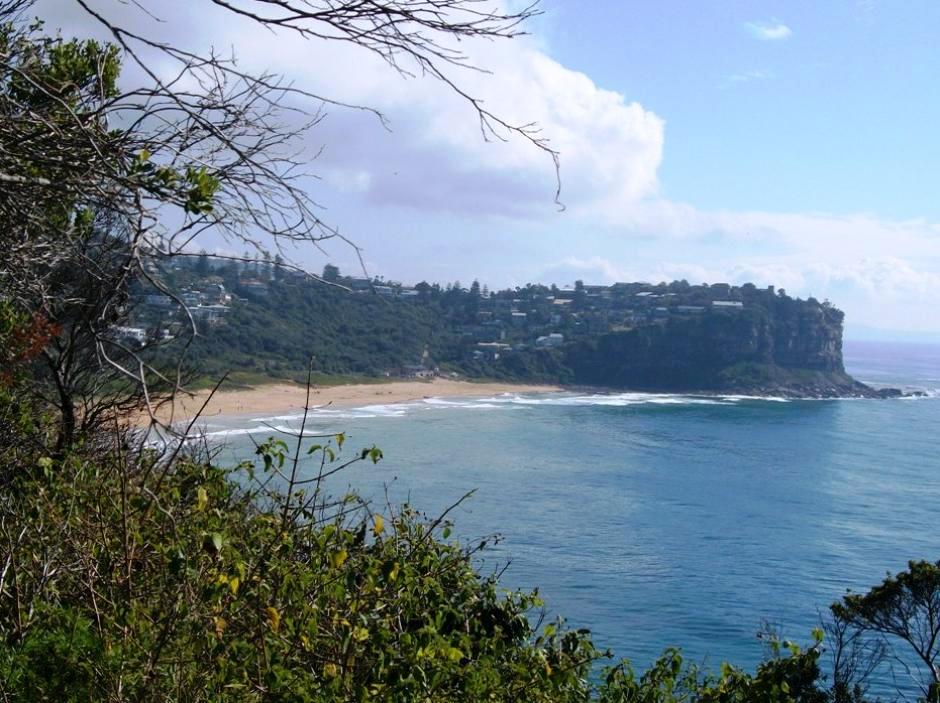
The Bungan Beach Surf Life Saving Club
The Bungan Beach Surf Life Saving Club was founded in 1953. Owing to budgetary restrictions proposals from 1950 to construct a boatshed, changing rooms etc. were stymied for several years in a row.The current clubhouse building was constructed around 1970.
Bungan Beach was one of the few beaches not to be cleaned by Council or to have garbage bins installed. In 1972, Kim Cooper and the late Ray Price commenced their long-term efforts to keep the beach clean. The now common white bags for rubbish collection were implemented as a result of these efforts by Council along Bungan Beach and many other beaches in Pittwater.
Bungan Beach SLSC's beginnings will run as a future history page.
Rescues At Sydney Beaches
SYDNEY. November 13. -More than 20 people had to be rescued today from heavy surf at Sydney beaches. Most of the rescues were not serious, but at Bangan Head, two lifelines had to be joined to rescue two girls. The girls were swept about 400 yds out from the rocks and were brought back to the beach only after a long struggle by lifesavers.
At Newport and Maroubra, girls who had been taken out by strong undertows had to be treated for shock after being rescued. A big crowd went to most beaches In line, sunny weather. Rescues At Sydney Beaches. (1955, November 17). The Central Queensland Herald(Rockhampton, Qld. : 1930 - 1956), p. 13. Retrieved from http://nla.gov.au/nla.news-article79256835
The Waters: Reefs and Tides
Bungan Beach, as listed on beachsafe.org, can be a dangerous beach to swim on. Beachsafe.org describes the bay of the beach as a '600 m long beach faces east-southeast and receives waves averaging 1.5 m and is surround at ether end of 40 to 50 metre high cliffs. A single bar runs the length of the beach, with two strong permanent rips against the rocks at either end, and 2-3 shifting beach rips along the centre (Fig. 4.202). The bar is usually attached during periods of lower waves, but commonly detaches, particularly towards the north, during and following high waves. This results in a continuous trough with rips and their feeder currents, occupying the inner surf zone.'
The rock platforms of Bungan Headland (including Little Reef) and Mona Vale Headland have been gazetted as Intertidal Protected Areas (IPA’s) under N.S.W. Fisheries jurisdiction and were chosen for protection by N.S.W. Fisheries for biological and ecological reasons, and to protect the areas from impacts of rock platform activities such as fishing and harvesting of organisms for bait and human consumption.
Many know that a War Grave for two Japanese submariners in a still intact M24 five kilometres out and 55 metres down off Bungan Head exists - the only submarine of three that entered Sydney Harbour on May 31st, 1942 able to launch its torpedoes and sink the ferry HMAS Kuttabul, killing 21 men on board and injuring another ten.
A Pioneer RPAYC Sailor, Pittwater Regatta Participant and devotee of Broken Bay was also lost off Bungan, not as fortunate as the men aboard the Kallawatta:
YACHTING FATALITY OFF NEWPORT. Mr. A. C. Saxton Drowned. KNOCKED OVERBOARD BY BOOM.
A yachting fatality occurred off Newport shortly after midday yesterday, when Mr. A. C. Saxton, the principal of the firm of A. C. Saxton and Sons, Ltd., was lost overboard. Efforts were made to rescue him but without avail. His body has not been recovered.
Under lowering skies and in a southerly wind, which was blowing in strong gusts, causing a choppy sea, the yacht Awanui IV., of 12 tons, cleared Sydney Heads at 11 o'clock yesterday morning in commencement of a voyage to Broken Bay.
The party on the yacht consisted of Messrs. Alexander Charles Saxton, Charles Trebeck, Ivan McCathie, and Frederick Holmes. With the strong wind dead behind her the little vessel made good progress along the coast, and the trip was being enjoyed by the party. The wind became stronger when the yacht was about two miles off Bungan Head, near Newport. Yachtsmen who have made the trip from Sydney to Broken Bay realise that when approaching the latter port there is always a danger of their vessel jibing. Mr. Saxton apparently was watchful for this, but, not-withstanding his care, the vessel did jibe. Portion of the sail caught on the crosstree, and, while an effort was being made to free the sail, the boom, which had been hooked up, came down with terrific force. It struck Mr. Saxton, who was at the wheel, with a force that caused him to fall overboard.
With great presence of mind, the other members of the party got the Awanui IV. under control. Mr. Trebeck rounded the vessel up, and got Mr. Holmes off in the dinghy. With difficulty, Mr. Holmes reached Mr. Saxton in the choppy sea and hauled him into the dinghy. Mr. Holmes commenced to row back to the yacht, but the dinghy half filled with water. At the same time, the yacht was worked towards the dinghy, but when the latter was ranging alongside the yacht, it was struck by the larger boat, causing it to capsize. It is thought that the blow received by Mr. Saxton from the boom of the yacht stunned him, as he was helpless. He was thrown into the sea when the vessels came together and quickly disappeared. Although a long search was made, no trace of him could be found.
The yacht was taken to Bayview by Mr. Trebeck.
MR. SAXTON'S CAREER.
The late Mr. Saxton, who for many years has occupied a prominent place in the business life of Sydney, was born at Remuera, Auckland, N.Z., and was 61 years of age. He came to Sydney as a boy, and entered the business of his father, the late Mr. C. T. Saxton, who had established a timber firm. At a later date Mr. Saxton acquired his father's interest in the business, and from a very small beginning built up one of the largest firms of its kind in Australia. Some time afterwards, the late Mr. J. H. Binns entered into partnership with Mr. Saxton, and they floated the business into a private company, under the title of Saxton and Binns, Ltd. In 1908 Mr. Binns retired from the business, Mr. Saxton acquiring his interests. Nine years later the firm became A. C. Sax-ton and Sons, Ltd., under which title it is at present conducted.
Mr. Saxton was for many years president of the Sydney and Suburban Timber Merchants' Association. He was also an enthusiastic yachtsman and golfer. He was rear-commodore of the Royal Sydney Yacht Squadron, and was one of the founders of the Drummoyne Golf Club, and was president of the Leura Golf Club. For some time past he had occupied the position of president of the Drummoyne branch of the Nationalist Association.
In yachting circles Mr. Saxton was regarded as a skilful navigator, and built and owned not only Awanui IV., but the Awanui I., Awanui II., and Awanui III. Mr. Saxton was the holder of the Northcote Cup for six-metre boats, having held that trophy for some years. He had not been challenged for it for some years.
He was a member of the Australian Golf Club, the Royal Sydney Golf Club, and the New South Wales Club.
Mr. Saxton is survived by his widow (formerly Miss Janet Wilson) and five sons and one daughter. The sons are Messrs. Harold, A. W., C. D., and Geoffrey Saxton (who are directors of the firm of A. C. Saxton and Sons, Ltd.), and Mr. Saxton (who is at present in business at Tacoma, Washington, U.S.A.). The daughter is Miss Janet Saxton. YACHTING FATALITY. (1926, October 1). The Sydney Morning Herald (NSW : 1842 - 1954), p. 11. Retrieved from http://nla.gov.au/nla.news-article16313098
THE LATE MR. A. C. SAXTON'S YACHT. AWANUI IV.
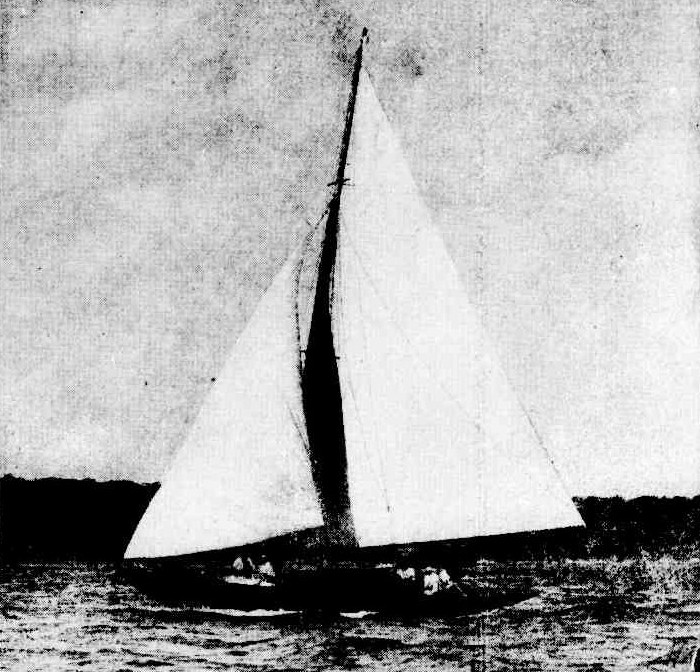
While the yacht was off Bungan Head, near Newport, on Thursday, the boom of the vessel struck Mr. Saxton and knocked him into the sea. He was picked up by a dinghy, but was lost while an effort was being made to place him on the yacht. THE LATE MR. A. C. SAXTON'S YACHT. (1926, October 2). The Sydney Morning Herald (NSW : 1842 - 1954), p. 18. Retrieved from http://nla.gov.au/nla.news-article16332597
A TIMBER MERCHANT'S ESTATE
The estate of the late Alexander Charles Saxton, timber merchant, who lost his life while yachting off Newport, has been valued for probate purposes at £192,891. LATEST TELEGRAMS. (1927, April 5). The Riverine Grazier (Hay, NSW : 1873 - 1954), p. 2. Retrieved from http://nla.gov.au/nla.news-article140676381
A Few Landmark Early Other Residents
We have collected material on early residents of Bungan and shall run this as a future History page. For now, two of the standouts, apart from the wonderful Pollock and Morrison families:
Bungania Built by a Wordsmith
AN APPRECIATION. (By E.B.)
By the death of Mr. Alfred Gregory Yewen, which occurred at his residence, Bungan Head, Newport, early on Monday morning, there passed away a notable contributor to the pastoral annals of Australia and a picturesque and forceful personality of the district In which he lived. Born at the Canteen, Croydon Barracks, Surrey, in 1857, his father, a former bandmaster in the British Army, he was the fourth son among nine children. When 30 years of age he came to Australia for the sake of his health, and settled for a while in Queensland. Then, coming on to Sydney, he took an active part In politics. In those days Mr. Yewen was an ardent Socialist In the Old Country he had come within the personal influence of such well-known men as William Morris, George Bernard Shaw, and Walter Crane; and on arrival here be placed his services at the disposal of the ultra-democratic party. The Labour movement-hardly as it is known to-day, but as it existed for many years prior to the war-was then in its inception, and Mr. Yewen, as writer and platform speaker, took no small part In the stirring events through which the hopes of Democracy were transferred from trades unionism of the old fashioned order and hitched to the chariot wheel of a Parliamentary Labour party that was itself then non-existent.
Among his most intimate associates at that time wore the Right Hon. W. M. Hughes, Mr. W. A. Holman, K.C., Judge Beeby, and Mr. Thomas Routley, now a member of the Board of Trade. Mr. Yewen, to whom half-measures never were congenial, represented the extremist section of this coterie. He rather typified, in fact, "the gentle anarchist" of Action. But he had landed penniless, and with the remnant of a lung. And when, eventually, the sunshine of Australia began to react upon his health and the exigencies of Journalistic life, to which he was Introduced by the kindness of Dr. Ward, threw him into fresh currents of activity, he took a more optimistic view of things in general. Probably the fact that he saw himself-a lame duck from the start-year by year "making good" in the land of his adoption, supplied, the most unanswerable argument of all. In spite of Karl Marx he had got his own head above water; and what industry and perseverance could do for him he began to think that they might do for others. But Gregory Yewen was a worker always. He never "went slow." In the direst days of calamity and bitterness, when he could see little in the world about him but examples of fiendish "expropriation," he had no time for lazy people.
Yet that is hardly true. For Yewen, though In the old days he seemed quite incapable of seeing the other side of an economic argument, was very much alive to the mysteries of art and science. As a young man he lost no opportunity of self improvement. Off to work as a London stone mason at 6 o'clock In the morning, the evenings often found him at the feet of Huxley and Tyndal. He liked the monumental things in art and literature. Throughout life he read little current fiction. But the picturesque on a grand scale in nature, in music or on canvas, never failed in their appeal. It was Beethoven and Wagner, Shakespeare, Dumas, and Leighton who won and held his admiration.
In recent years, though ever an interested spectator and often a keen and caustic critic, Mr. Yewen took no public part in matters political and economic. Whatever his views might have been on the prospects of revolutionary change, at all events he kept them to himself. Most likely, having parted with so many fundamental principles from which the superstructure of his earlier creed had sprung, he built no more castles in the air. But taking things more or less as he found them and genuinely disappointed in the trend of the Labour movement in Australia, he focussed his attention upon the work he had in hand, and strangely enough when one comes to think of it that had almost exclusively to do with the primary products of the country, especially with sheep and cattle, upon many aspects of which he became in time an authority of comparatively high standing.
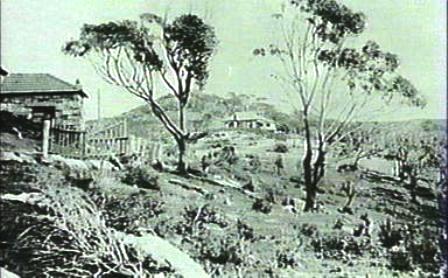 Years ago, when still a poor man, he bought land at Newport, and there, on a great promontory, unfolding an interminable view of coastline, he built-the first portion of It by his own unaided labour-a stone cottage. His family were living at the time at Mosman, and from there he would Journey on a "pushbike" over week-ends to the scene of his future home. Sometimes a whole Saturday and Sunday would be occupied by the shifting of a single huge stone. His friends said that he must have the heart of a lion. Still, little by little, hindered sometimes by sickness, sometimes by foul weather, he pegged away, and eventually starting with an angle in the living rock of an old quarry for the first two walls of his sitting-room, he laid the foundations of a house that was destined to be as rugged externally, and Internally as hospitable as its owner. That same sitting-room, by the way, covered with a high Gothic, uncoiled roof, is today the repository of a particularly fine collection of oils and water-colours from the studios of the best-known local artists, whilst the landscape northwards from the adjacent verandah is probably the most extensive and beautiful to be obtained from any headland on the coast of New South Wales. The house grew in size as the purse of my friend expanded. Room was added to room, and now, though it is still a residence, only one storey high, many flights of stairs have been found necessary to chase the new additions up and down the hill. Such as it is, this unique creation, built, at least in part, by this remarkable man with the remnant of a lung, will out-weather the worst storm that hustles up the coast In the next hundred years.
Years ago, when still a poor man, he bought land at Newport, and there, on a great promontory, unfolding an interminable view of coastline, he built-the first portion of It by his own unaided labour-a stone cottage. His family were living at the time at Mosman, and from there he would Journey on a "pushbike" over week-ends to the scene of his future home. Sometimes a whole Saturday and Sunday would be occupied by the shifting of a single huge stone. His friends said that he must have the heart of a lion. Still, little by little, hindered sometimes by sickness, sometimes by foul weather, he pegged away, and eventually starting with an angle in the living rock of an old quarry for the first two walls of his sitting-room, he laid the foundations of a house that was destined to be as rugged externally, and Internally as hospitable as its owner. That same sitting-room, by the way, covered with a high Gothic, uncoiled roof, is today the repository of a particularly fine collection of oils and water-colours from the studios of the best-known local artists, whilst the landscape northwards from the adjacent verandah is probably the most extensive and beautiful to be obtained from any headland on the coast of New South Wales. The house grew in size as the purse of my friend expanded. Room was added to room, and now, though it is still a residence, only one storey high, many flights of stairs have been found necessary to chase the new additions up and down the hill. Such as it is, this unique creation, built, at least in part, by this remarkable man with the remnant of a lung, will out-weather the worst storm that hustles up the coast In the next hundred years.
Above right: Yewen and Fitzackerley family homes, Newport, ca. 1920, Courtesy Pittwater Library.
Mr. Yewen's literary experience covered some thirty years of Australian Journalism, and, though latterly he had perforce confined his attention, to questions affecting the pastoral industry, during the earlier portion of his career it was unusually diverse. He assisted the late Gresley Lukin on the Queensland "Boomerang;" for two years or more he sub-edited the Brisbane "Worker," and subsequently-this was after a period of seclusion (and doubtless reflection), during which he shared a strange menage in the country, with two ill-assorted mates, one an anarchist, who was irritable and bad-tempered, and the other a Communist, who was hopelessly lazy-he sub-edited the "Stock and Station Journal." Later on, in conjunction with the late Dr. Gellatly, he founded a short-lived but high-class periodical known as "The Three A's" (All About Australia), and from that he drifted into daily Journalism, becoming a valued member of the reporting staff of the "Sydney Morning Herald."
For fourteen years in this capacity he attended the fat stock sales at Homebush, where he made many friends amongst both buyers and sellers. Indeed, his knowledge of the trade, no less than his integrity, won the admiration of all with whom he came in contact. Later-until his health precluded the possibility of regular literary work-Mr. Yewen wrote the weekly wool article for this Journal. He also contributed extensively to "Dalgety's Review," and for many years was responsible for the contents of the encyclopedic annual published by that firm for the information of the whole wide world on matters relating to the pastoral interests of Australia. AN APPRECIATION. (1923, June 13 - Wednesday). The Sydney Morning Herald (NSW : 1842 - 1954), p. 14. Retrieved from http://nla.gov.au/nla.news-article16057384
Worker-Staff, Brisbane, 1892
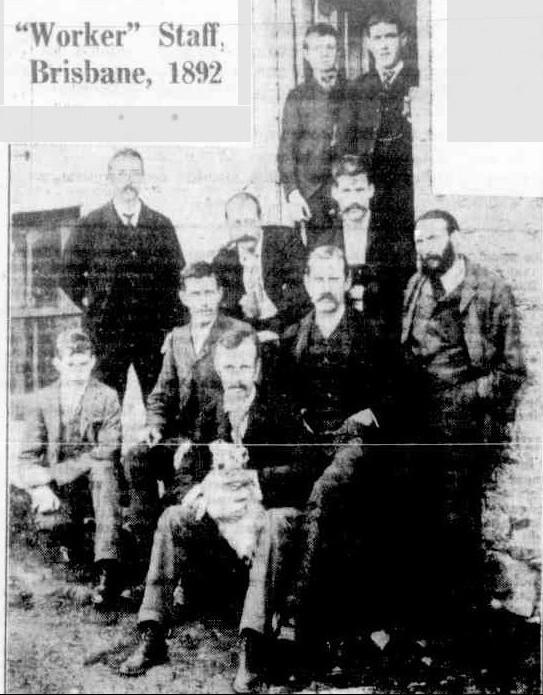
Top— S. BURGESS, S. THOMPSON. Second row— W. M'COSKER, W. LANE, D. CUMMING, A. G.YEWEN. Front— T, J. DONOVAN, T. W. CRAWFORD, F. BARNES, F. LEYSLEY. "Worker" Staff Brisbane, 1892. (1940, February 27). Worker(Brisbane, Qld. : 1890 - 1955), p. 13. Retrieved from http://nla.gov.au/nla.news-article71369316
Bungan Castle
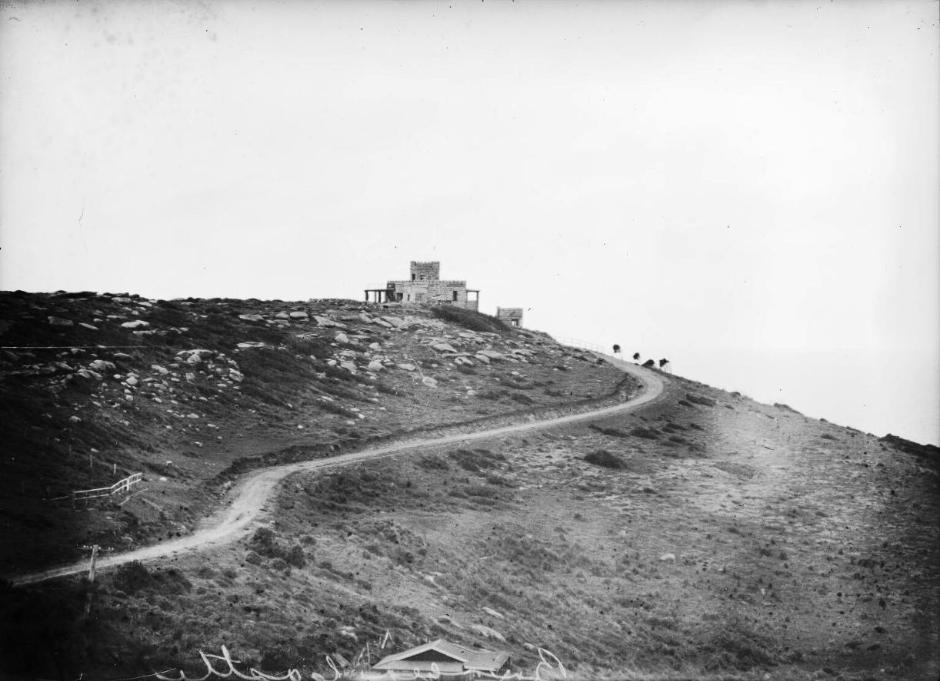
Road winding up to Bungan Head Castle, Newport, Sydney, ca. 1928, PIC/15611/16753 LOC Cold store PIC/15611 Fairfax archive of glass plate negatives, courtesy National Library of Australia
Built in 1918 and completed by 1920, this landmark along our coast remains a feature of Bungan Beach. An early article speaks of the historic pieces of colonial history that have been gathered as so many gave 'relics' found to be housed at Bungan Castle:
Castle Turrets on Sydney's Skyline
Nobody Wants them
Our Baronial Halls
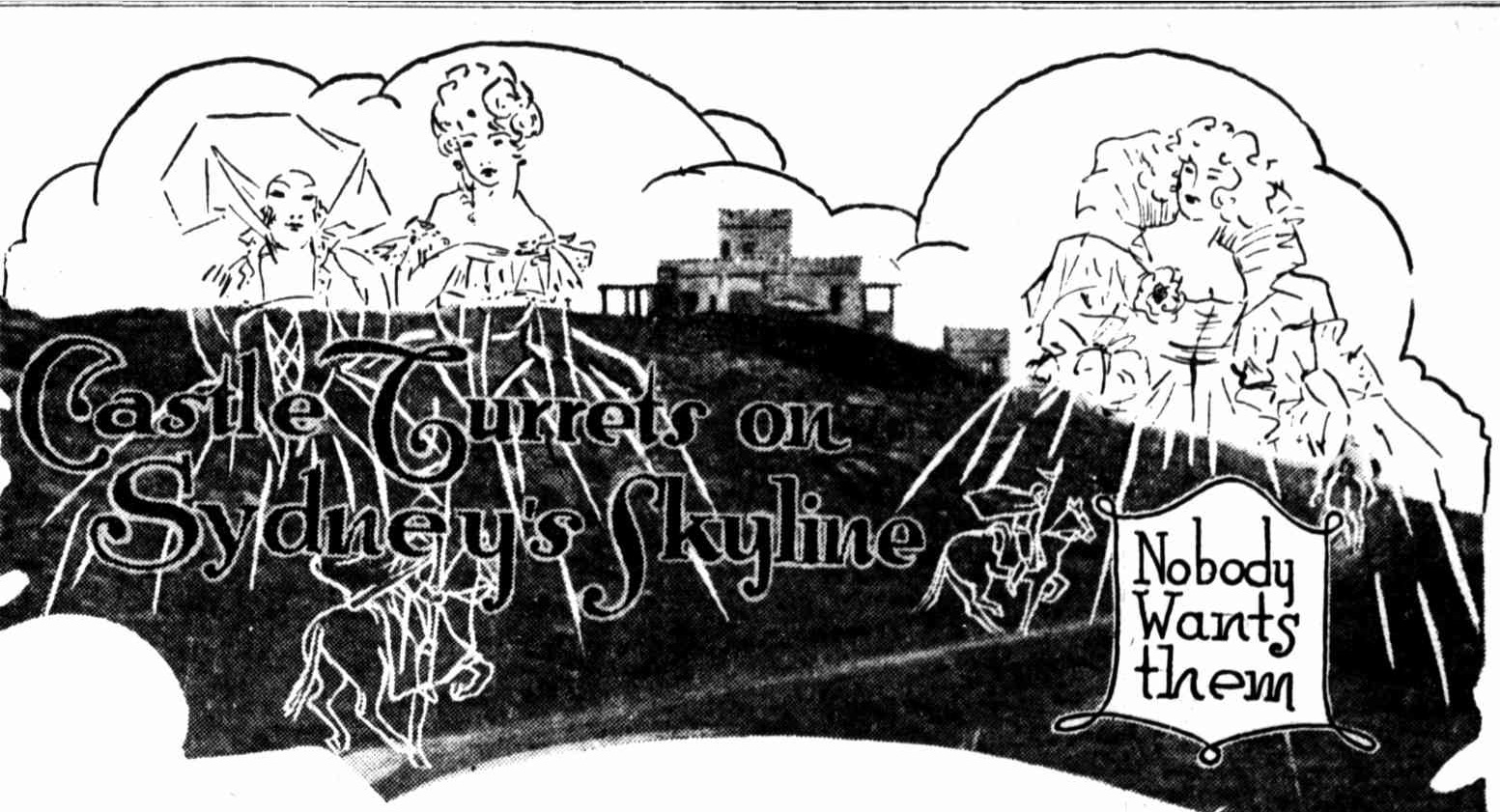
Do you know Sydney's crumbling castles? Yes — Sydney, young as it is. Their turrets burst through the mass of red tiles which ever way you look. This article describes them.
What offers for this genuine stone castle, complete with don-jon, battlements, towers and turrets, official ghost, dungeon, vaults, battle-axes, skeletons, and fish-pond? There is a dreadful silence. Come, come. Are we bid four-pence? We are not bid fourpence. Doesn't anybody, want this castle? It's a good castle. It's got ivy growing round the portcullis, and a coat of arms over the front door. It's got a stone courtyard, and a number of fine old danksome crypts, and a collection of authentic gargoyles. Any advance on fourpence? Nothing moves in the old castle. There is no noise but the crumbling of plaster, the flapping of wallpaper, the far-off trickle of buried water. Sunlight yellows the old empty rooms. The air is dead, stirred by no cur-rent, heavy with the odor of decay. The world goes on outside, Sydney looks over the fence, a million people live their lives, in semi-det. brick bungs., but nobody wants a castle. That is the sad fact. The castle business has fallen on bad days. The bottom has tumbled out of the baronial Industry. Nobody wants a castle in 1927.
Gone are the days when a retired prince of commerce yearned to be set up in an ancestral mansion, with battlements and drawbridges, and a herd of coach-men with cockades in their hats. Like huge, forgotten relics, the bones of dinosaurs, you will find their sentimental traces over Sydney. These are the castles of 1870. But the retired prince of com-merce in 1927 prefers comfort to romance. He would sooner have a Californian villa with bil-liard-rooms and built-in cupboards and electric refrigerators. Castles give him a pain. And so we find them scattered over Sydney to-day — huge, melancholy derelicts, with crumbling walls and silent corridors. Nobody wants them. Nobody looks at them. They are just castles, and there is no advance on fourpence.
But wait! There is one glorious exception. Bungan Castle. Motoring round the coast from Manly, you see its incredible turret against the sky-line, in between Pittwater and Newport, over Bungan Beach. It is built on the very pinnacle of the cliff. Its lonely tower looks down over a sheer precipice into the foaming Pacific.
There are no houses near it. It stands there, solitary and desolate, a castle from some Rhenish crag. And it is a real castle. That is to say, it is conducted as a castle should be. No "To Let" notices have been plastered on its gates. Its owner evidently has a feeling for castles. A Sydney art dealer is the proprietor. The place looks immemorial, but it has really only been built about seven or eight years. The whole thing has been constructed out of stone taken from the spot itself. If you venture up the long, lonely winding road, into the hall, you might think, for one astounding moment, that you had suddenly walked back three centuries into the enchanted kingdom of Queen Elizabeth. The walls inside are rugged stone. Windows open on to the stormy sea. And on the battered oak table a great candelabra of silver has been drip-ping its wax.
All round, suspended from the walls, an extraordinary collection of medieval armor, helmets, weapons, swords and daggers, completes the picture. From the ceiling a stuffed hawk dangles. Ships' lanterns hang by its side. Racks of muskets are in every corner. Over the enormous stone fireplace, piled up with real baronial logs, are Saracen helmets, Viking shields, pistols, and battle-axes, also an unpleasant medieval weapon consisting of two iron spikes on a chain.
The bedroom, opening off this big hall, is equally magnificent. The stone walls are draped with tapes-tries. A candelabra is fixed to the bedstead, and underneath this a knife rests in an engraved sheath. On the table there is a gong, and a rope, swinging on the wall, connects with a big bell up on the roof, which may be tolled at appropriate moments. The big bell itself has a history. It is called the "Execution Bell," and it came from Wiseman's Ferry, where it was rung every time a convict was put to death.
Sea-chests and rapiers, convict leg-irons, pistols and swords and old oil paintings are everywhere. There is a rusty bayonet which was fished up from the Tank Stream. There is a shark's jaw from Aden, and a rifle from the Zulu campaign. A jovial touch is supplied by a fat barrel, with a silver spigot, standing in one corner.
Over the door in the hall a human skull is set. It was found on Bungan beach, washed up in the surf. Up in the turret-room, at the top of the tower, there is another skull, this one from the South Sea Islands.
Farther down the coast, in the village of Manly itself, hemmed in bed red tiles and suburban back-yards, another castle rears its towers into the air. This is called Dalley's castle. Its masonry is perfect, even to the coat of arms chiselled over the gate. The grounds have long since been sub-divided or drowned in weeds. Here and there broken statues, ends of terraces, fragments of urns and pillars, protrude from the earth. There is a magnificent stone stairway guarded by a pair of arrogant carved lions. But, alas! the castle is for sale.
And nobody seems anxious to live in a castle. In the old courtyard the carriage used by Lord Loftus rests. Its wheels are missing, and it is thick with dust, but an air of vice-regal dignity still hovers round the venerable relic. In the centre of the courtyard there is a gas-lamp-post. You can imagine what the scene was like on a dark winter's night, with carriages clattering over the cobble-stones, grooms coming out of lighted rooms, and the old lamp-post shedding its watery radiance on the steaming horses. Well, there you are. If you want a castle, you can have It. Or you can have half-a-dozen others — immense stone buildings, gloomy with dark dignity, scattered over the older sub-urbs of the city — regions like Strathfield, which 60 years ago were still suitable for country houses. The ex-Speaker, Mr. Willis, lives in a splendid castle at Middle Harbor. Seen from the water, with its turrets floating, above the tree-tops, it seems incredibly magnificent. But even Mr. Willis is dissatisfied with his castle. He says it is too cold in the winter. There's no doubt about it. Castles are unfashionable. Battlements and donjons have retreated in favor of tennis-courts and wireless-masts. Meanwhile, if you've got enough to run it, you could probably have a perfectly good castle given to you.
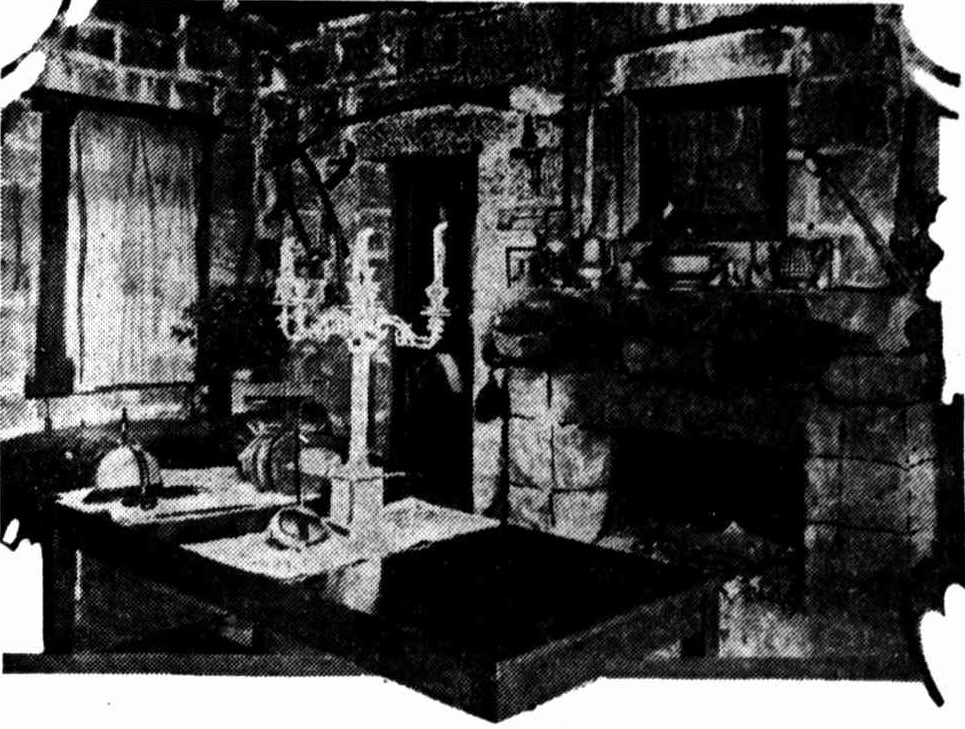
The atmosphere of age — the main hall in Bungan Castle. Notice the stuffed hawk swinging from the rafters.
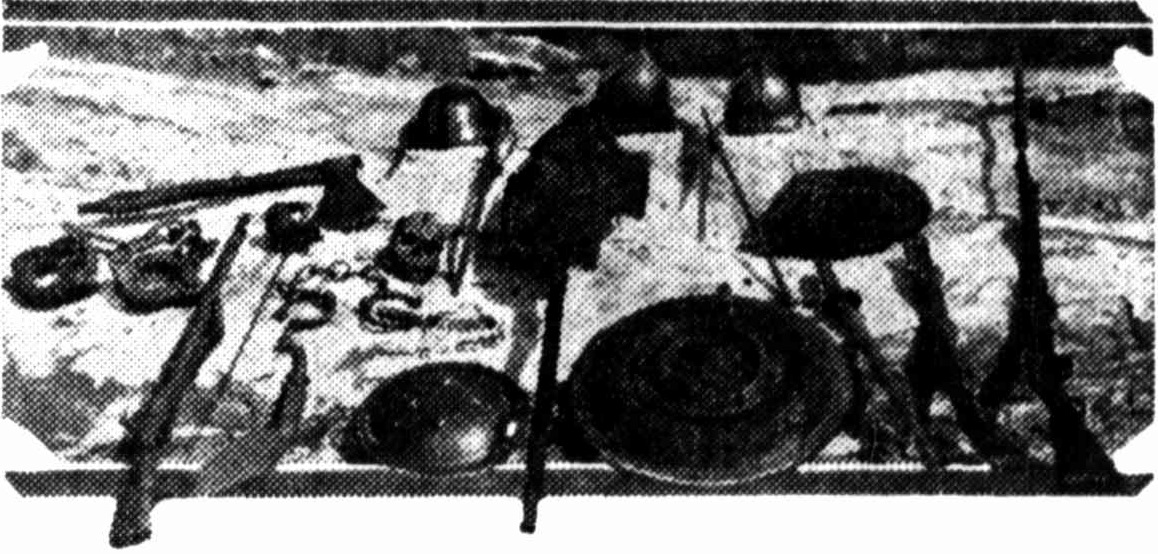
Baronial accessories from Bungan. They include a skull washed up in the surf, a Viking shield, a Saracen helmet, a set of convict leg-irons, and a Scotch battle-axe which is said to have beheaded Wallace.
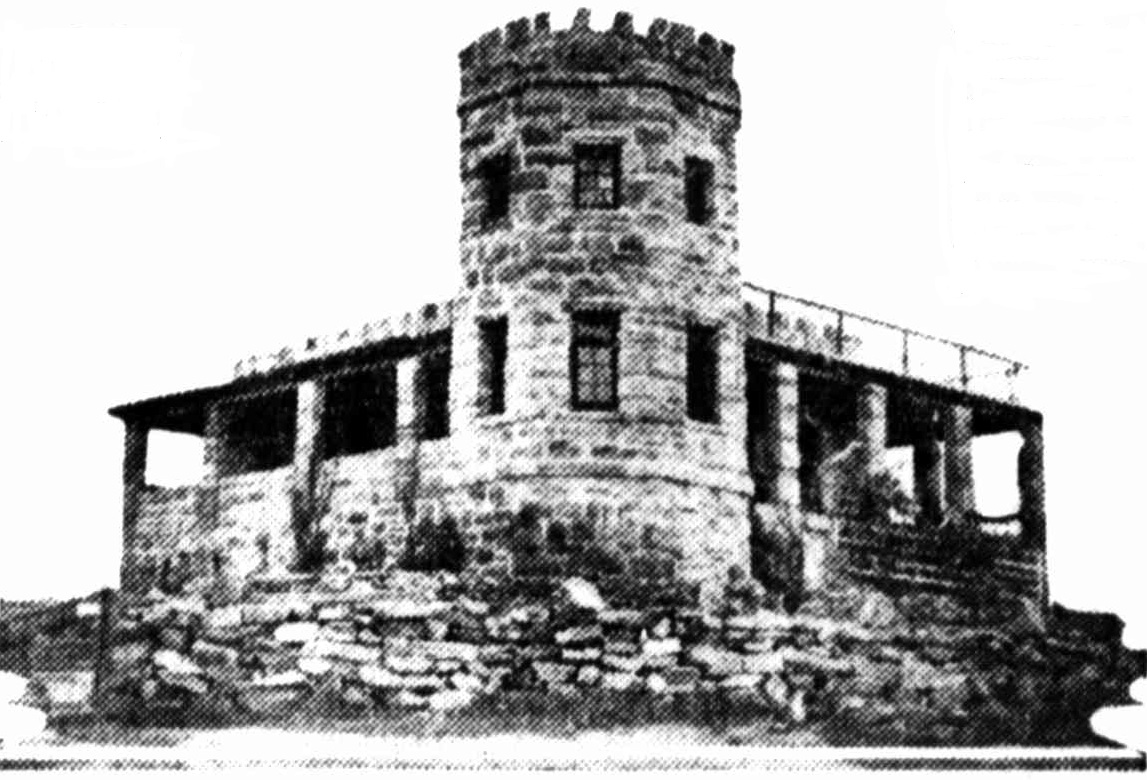
Bungan Castle. It looks mediaeval, but it has only been built seven or eight years.
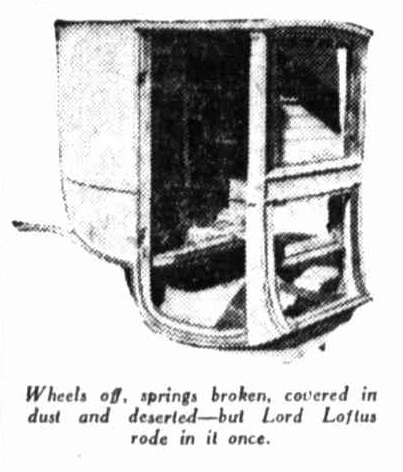
Wheels off, springs broken, covered in dust and deserted — but Lord Loftus rode in it once.
Castle Turrets on Sydney's Skyline (1927, May 8). The Sun (Sydney, NSW : 1910 - 1954), p. 29. Retrieved from http://nla.gov.au/nla.news-article223623550
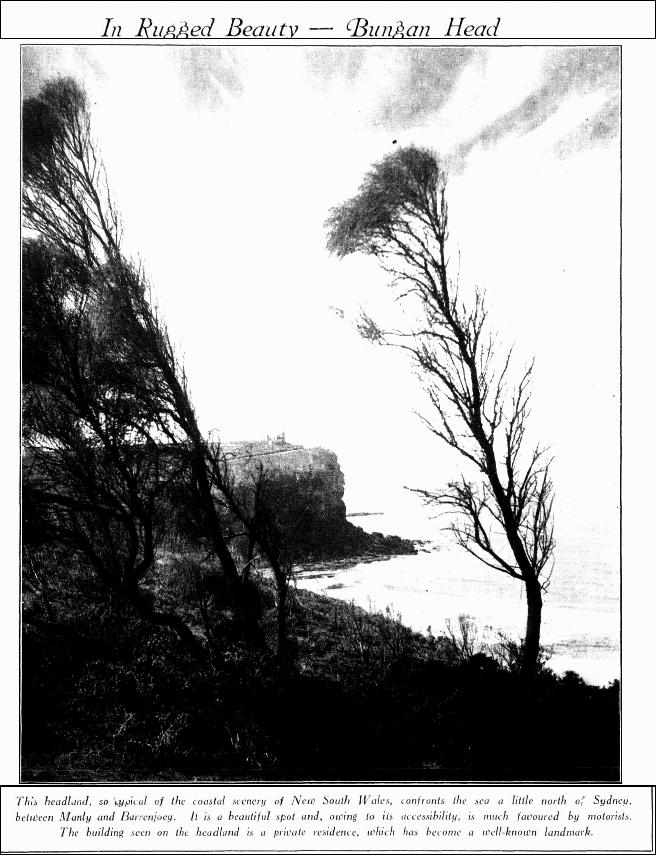
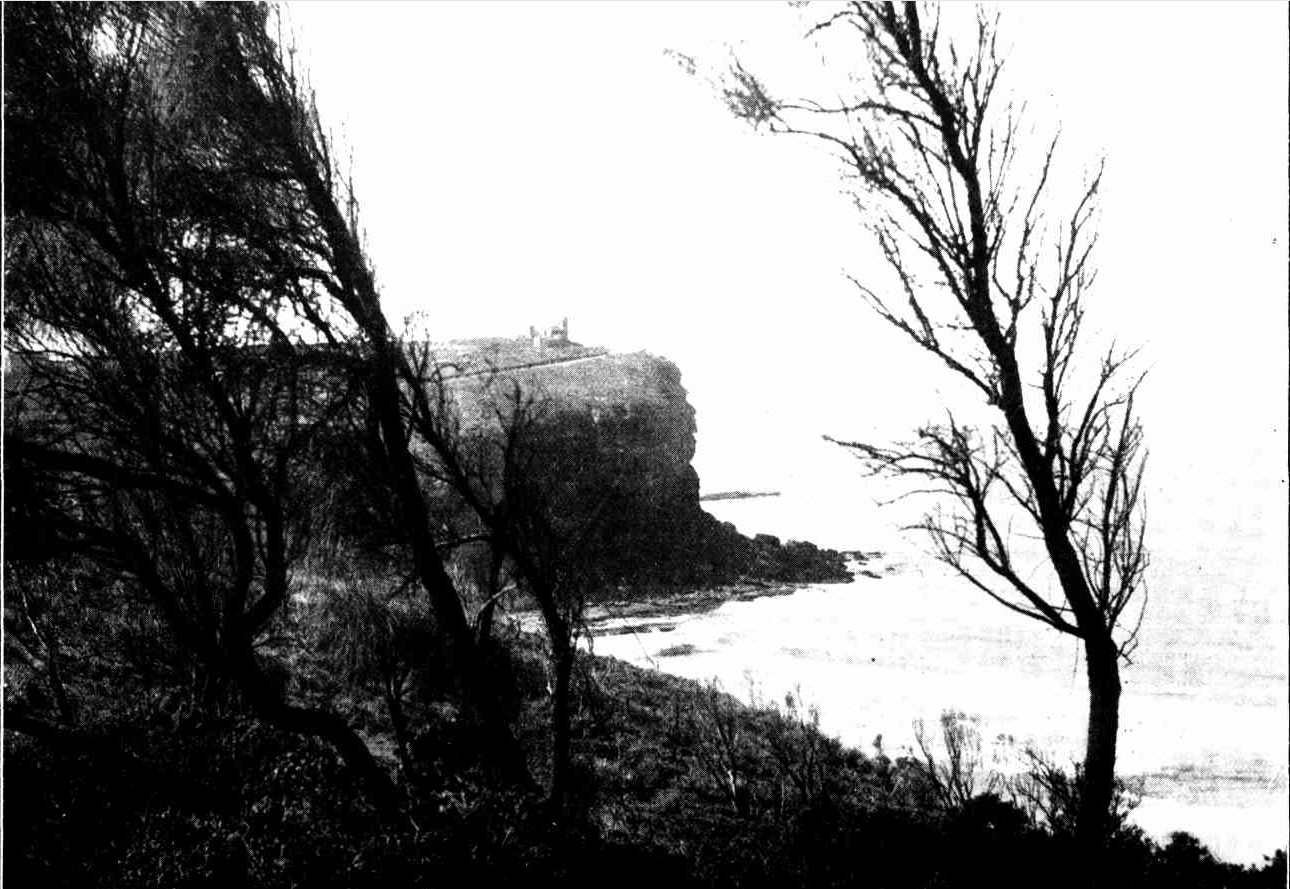
In Rugged Beauty — Bungan Head
This headland, so typical of the coastal scenery of New South Whales, confronts the sea a little north of Sydney, between Manly and Darrenjoey. It is a beautiful spot and, owing to its accessibility, is much favoured by motorists. The building seen on the headland is a private residence, which has become a well-known landmark. In Rugged Beauty — Bungan Head (1933, September 20). Sydney Mail (NSW : 1912 - 1938), p. 5. Retrieved from http://nla.gov.au/nla.news-article165961885
A Castle Fronts The Sea
By M. FLYNN
While travelling along the Pacific Coast highway from Sydney recently we felt suddenly that our eyes were deceiving us.
There on Newport Head stood an old Norman Castle, complete with towers and castellated walls, as though mysteriously transported from Britain or old France. However, a closer approach showed the castle to be undoubtedly real. A small sign stated that we could inspect it and we promptly did so, curious to learn its history, which, briefly, is as follows: In 1916 an artists' representative, Mr. A. W. Alvers, of Sydney, widely travelled in older lands, decided to build himself a weekend castle, on the then deserted Newport Head, modelling it after old fortresses he had seen. It was solidly built of the local stone, and friends and soldiers helped in its building.
Completed In 1918
In 1918 it was completed and sat firmly on the headland many hundreds of feet above the blue Pacific rolling below the steep cliffs. From the windows of its round tower rooms one may see magnificent views along the coast-north to Avalon; south to Narrabeen and Collaroy, with Long Reef stretching its talons into the blue; and east to the immensity of the Pacific.
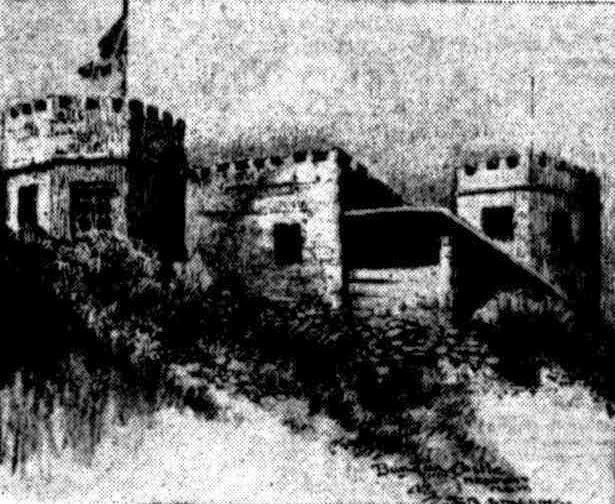
Bangan Castle, Newport, N.S.W. From a drawing by F. R. Stelling
The rooms of the castle are filled to overflowing with treasures and curios collected from all over the world. The skull of a long-dead French sailor jostles that of an aboriginal. A Malay kriss rests side by side with an old flint-lock gun. Ancient ships' lamps hang in every room and window. A tom-tom(relic of the Portuguese-Timor war) stands beside a pair of 80 year-old Russian samovars. The headpiece and chain-mail of a 15th Century Knight of Malta rests by the head of a Balinese woman carved cunningly in wood.
"Rare And Profitable"
It is a veritable museum of things "rare and profitable" ancient pewter, old French silver candlesticks, English china of a past age of elegance, Japanese enamels, and sad relics of the old convict days. The castle stands proudly on the sheer ridge of Newport Head, though settlement has crept up on its rear and the coast highway sweeps past its entrance. Mr. Alvers, its builder, growing old now, still lives there with a faithful Great Dane for company, in his fortress home that has no terrible memories of war or dungeons, but which expresses instead an enduring solidity, grandeur and peace. Life and Letters. (1953, May 16). The West Australian (Perth, WA : 1879 - 1954), p. 30. Retrieved from http://nla.gov.au/nla.news-article55804281
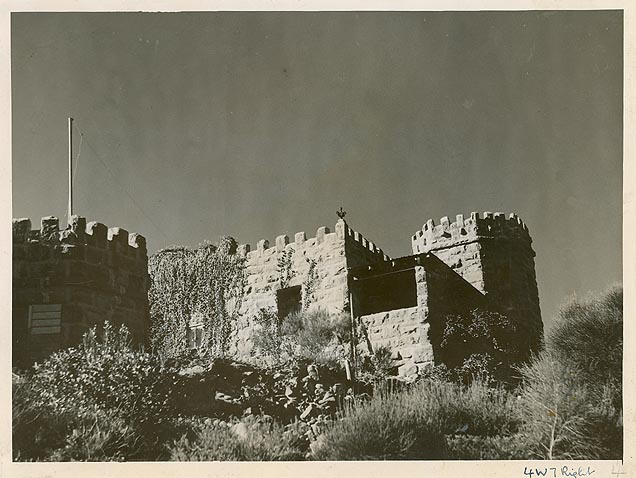
"The Castle", Bungan Head (NSW) Image No.: 12932-a012-a012X2442000144, from 'Original Prints of Photographs used in NSW trains', courtesy NSW Archives and records
SHIRE OF WARRINGAH.—Naming of Roads.—Ordinance 30, Clause 53, Local Government Act.—Notice is hereby given that the undermentioned roads have been renamed in accordance with section 249 (a) of the Local Government Act:—
Past Name or Location—New Name.
1. Road connecting Prescott-avenue with Bix-road, Dee Why—Wigan-street. (The above proposed name supersedes an earlier proposal to name this street Narree-street.)
2. French's Forest road, French's Forest:— (a) From Wakehurst Parkway easterly to its junction with Warringah-road—French's Forest road East.
(b) From Wakehurst Parkway westerly to the eastern boundary of portion 1,134 (the point at which road closure commences)—French's Forest road West.
(c) Between Rabbett-street and Forest-way—Naree-road. (d) Between Grace-avenue and Prince Charles road— Sorlie-road.
3. Beaconsfield-street East, Newport, between Barrenjoeyroad to Myola-road—Bungan Head road.
J. MORGAN, Shire Clerk, Shire Hall, Brookvale, 25th November, 1957. 1787—£1 11s. 6d. SHIRE OF WARRINGAH.—NAMING OF ROADS.—Ordinance (1957, November 29). Government Gazette of the State of New South Wales (Sydney, NSW : 1901 - 2001), p. 3859. Retrieved from http://nla.gov.au/nla.news-article220359872
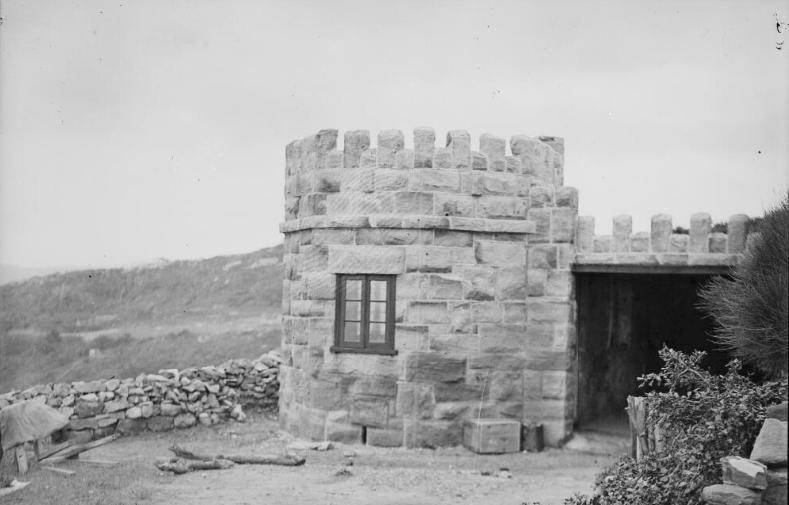
Bungan Castle turret exterior, New South Wales, ca. 1920 PIC/15611/3515 LOC Cold store PIC/15611 Fairfax archive of glass plate negatives - courtesy National Library of Australia
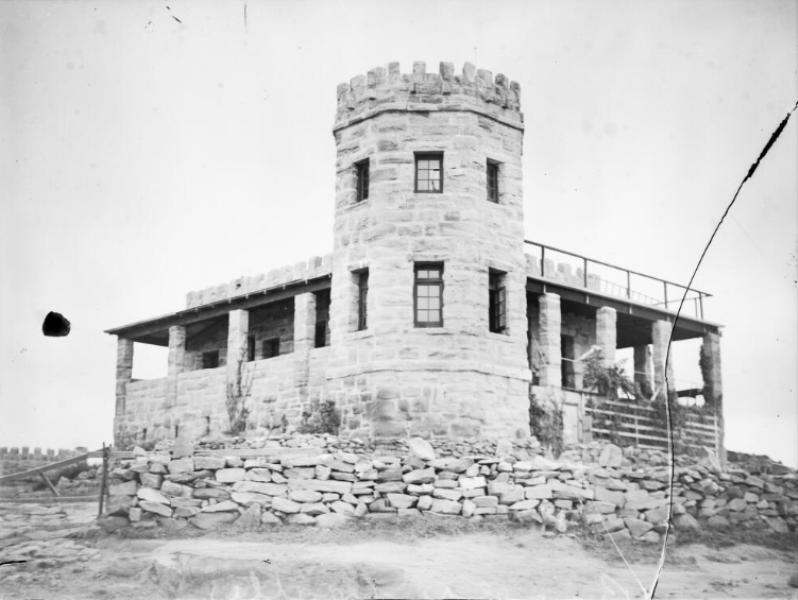
Bungan Castle on Bungan Head, Newport, New South Wales, ca. 1930 - PIC/15611/11599 LOC Cold store PIC/15611 Fairfax archive of glass plate negatives - courtesy National Library of Australia
CASTLE ON A CLIFF EDGE.
(BY. W. E. M. ABBOTT)
Many years ago— just after World War I., to be exact— a well-known Sydney artist and connoisseur dreamed a dream. Maybe, though he had lived in Australia almost all his life, his thoughts turned back to his native Alsace Lorraine and nostalgic memories of the wooded country sweeping down to the River Moselle, with the vineyards of this favored spot surrounding many a grey battlemented fortress and castle-legacy of the old Middle Kingdom of Charlemagne’s grandson,- Lothaire, from whom Lorraine took its name.
Memory can play us many a strange trick — give us sudden urges to recapture. ,,theiiv past—or create something fr6ni; the past to incorporate in our present everyday life. Who knows what it was that caused the artist to suddenly decide he would build a castle —not of dreams, but of solid sandstone, to defy and withstand –the passage of the years. And so, on a bold headland of the coast, about eighteen miles from Sydney, rose-a sturdy battlemented building with its tall, octagonal tower that can be, seen as a landmark all along the coast as one motors from Manly to Palm Beach. Isolated amid a setting of dull green coastal trees, stunted by the winds sweeping in from the sea, boldly silhouetted against the skyline, with the Pacific thundering at ( the foot. of the cliffs on which it stands, and with its stout walls fretted by the . gusty winds that blow almost continuously, it presents a striking picture. No headland in England carries a more rugged looking tower, no medieval fortress in Italy stands squarer to the four winds of Heaven.
Contrasting with the austerity of the stone walls in the terraced garden rioting about the castle —a 'profusion of multi-colored geranium and gay flowers, making a contrast against the azure blue of the sea, the flashing white of seagulls' wings, and the green of pine trees, and glossy leafed hedges. The owner, with a keen eye to all that is lovely and unusual, has furnished : his castle in, Keeping with its .'aged outside ' appearance; so that only lately, has he permitted such an innovation as electricity to oust the candles in their heavy silver, candelabra that shed, their glow on stoned walls of the great central living room, lighting up grim pieces of armour, old battle axes and swords —and the rich color of oil paintings, throwing into bold relief the great smoke-stained , yawning chimney place, and shedding pools of light on the heavy slabbed oaken central table. A skull grins down from the high stone wall between two candle scobs. Old and yellowed, it seems harmless enough — not even an object of fear to my small daughter as she holds it in her hands, gazing into the empty eye sockets as if she would wrest the past from its sightless cavities. Just as well she cannot, for long ago this was the head of a famous murderer who paid the penalty for his crimes upon the scaffold. More pleasant, and less macabre subject for speculation, is the heavily tooled, handsome, leather covered visitors' book, looking like some ancient tome from the library of a Monastic Brotherhood. Inside its stout covers one realises it is indeed a record of a brotherhood not monastic, but artistic, for here are the signatures, quips and jests of a host of artists and literary folk, whose names are household words in Australia, and also beyond our shores. Many of the artists' pictures have been painted on the very coastline the castle dominates. Many, together with men of letters, have been guests beneath the stout roof tree, sleeping in the turret room opening direct into the battlements, towards which eager ivy which mantles the walls, climbs year after year. Rare books, old silver and pewter, jostle cheeks with quaint glassware, and oil paintings sombre and gay. The ground floor room in the tower, with its deep set windows, is lined with cedar, and shelves carry a load of books-, indicating pleasant leisure hours. Many people who have never been within miles of the castle are familiar with it from the story strip in the 'Sydney Morning Herald,' featuring the Conways—for Thunder Castle, at Thunder Head, is the fictitious, but artistically accurate prototype of Bungan Castle, on Bungan Bungan Head which John Roland and Betty Santry have created for the 'Conway family' in their daily pictorial serial— even Sheba, barking defiance at strangers from the battlements, or collanaded verandah, appears as the Conways dog. In an area of cement sheet and wooden week-enders— one is grateful to an artist who many years ago dreamed a dream, and out of it rose the stout walls and grey tower of 'The Castle,' known to all residents of Newport Beach as a familiar and pleasing sight, dominating the headland above the seaside village.CASTLE ON A CLIFF EDGE. (1949, March 25). The Scone Advocate (NSW : 1887 - 1954), p. 6. Retrieved fromhttp://nla.gov.au/nla.news-article162719685
A POTATO FREAK. This extraordinary tuber was dug up recently at Bungan Castle, Newport, near Sydney, by Miss Aleathea Albers. No title. (1936, June 17). Sydney Mail (NSW : 1912 - 1938), p. 43. Retrieved from http://nla.gov.au/nla.news-article160639873
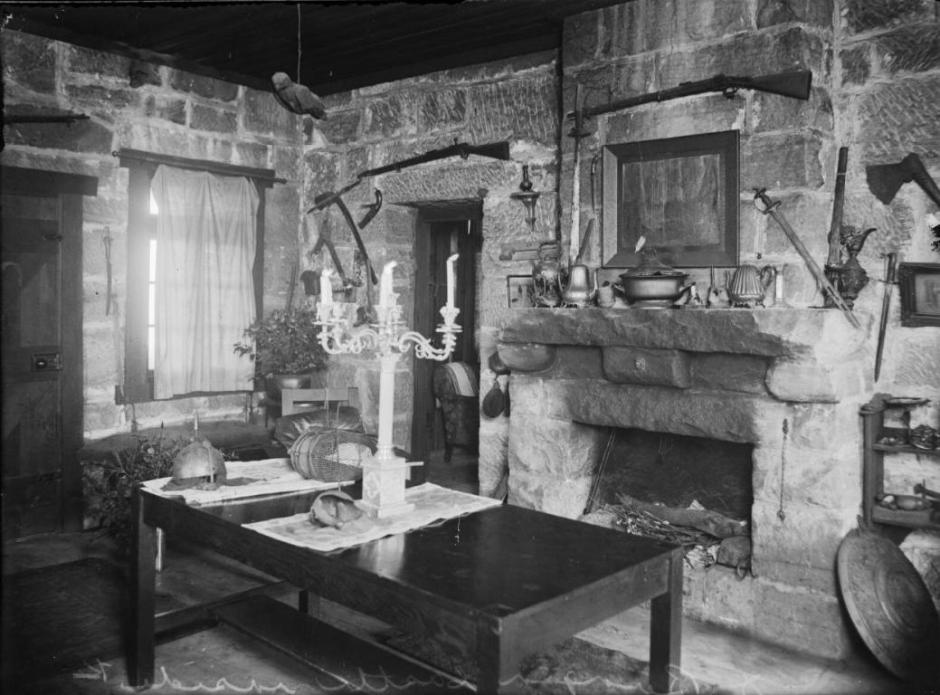
Historical artifacts decorating a room in Bungan Head Castle, Newport, Sydney, ca. 1928 - PIC/15611/16720 LOC Cold store PIC/15611 Fairfax archive of glass plate negatives
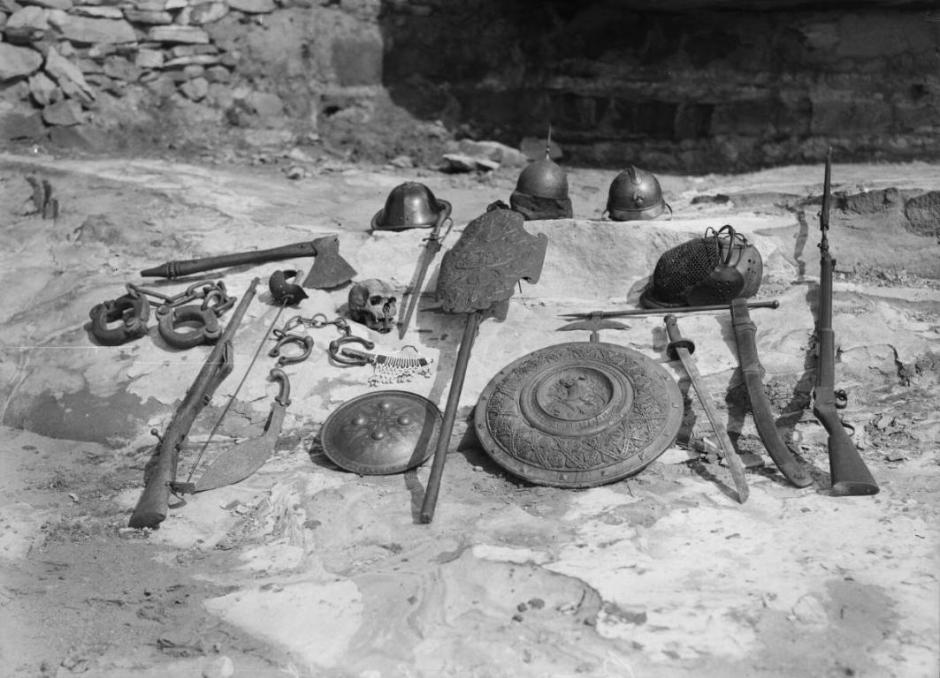
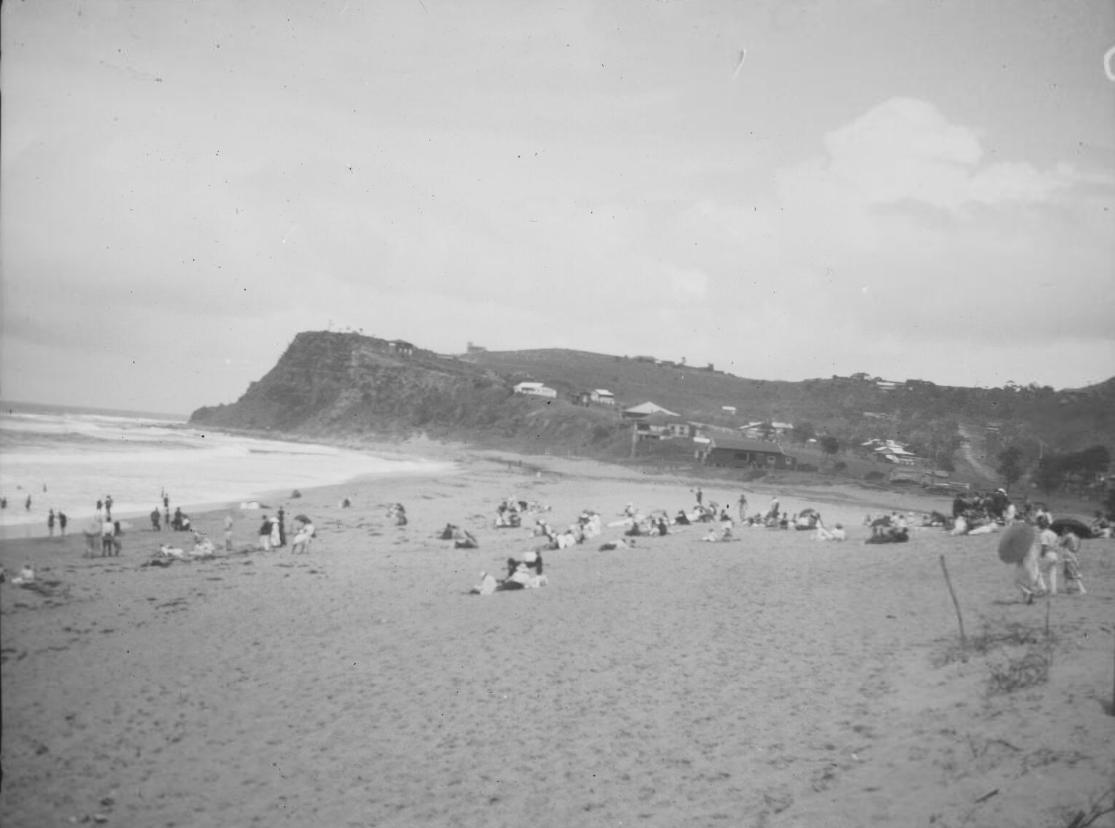
Newport Beach, February 1922 - picture courtesy National Library of Australia - Bungan Castle on cliff edge in distance - Part of the Michael Terry collection of negatives of his expeditions and travels- PIC/8847/3/5 LOC Nitrate store PIC/8847
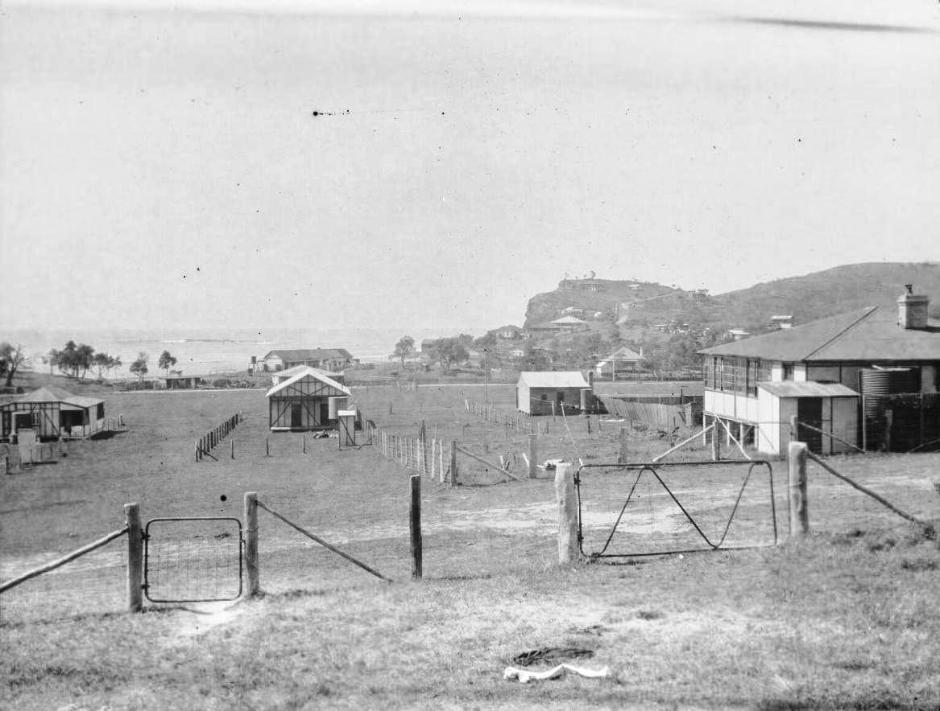
View from the Penfold's verandah towards the south headland, Newport Beach, Sydney, 1922 / Michael Terry PIC/8847/3/8 LOC Nitrate store PIC/8847 - Part of the collection: Michael Terry collection of negatives of his expeditions and travels, 1918-1971.; Also available online at: http://nla.gov.au/nla.pic-vn6248422
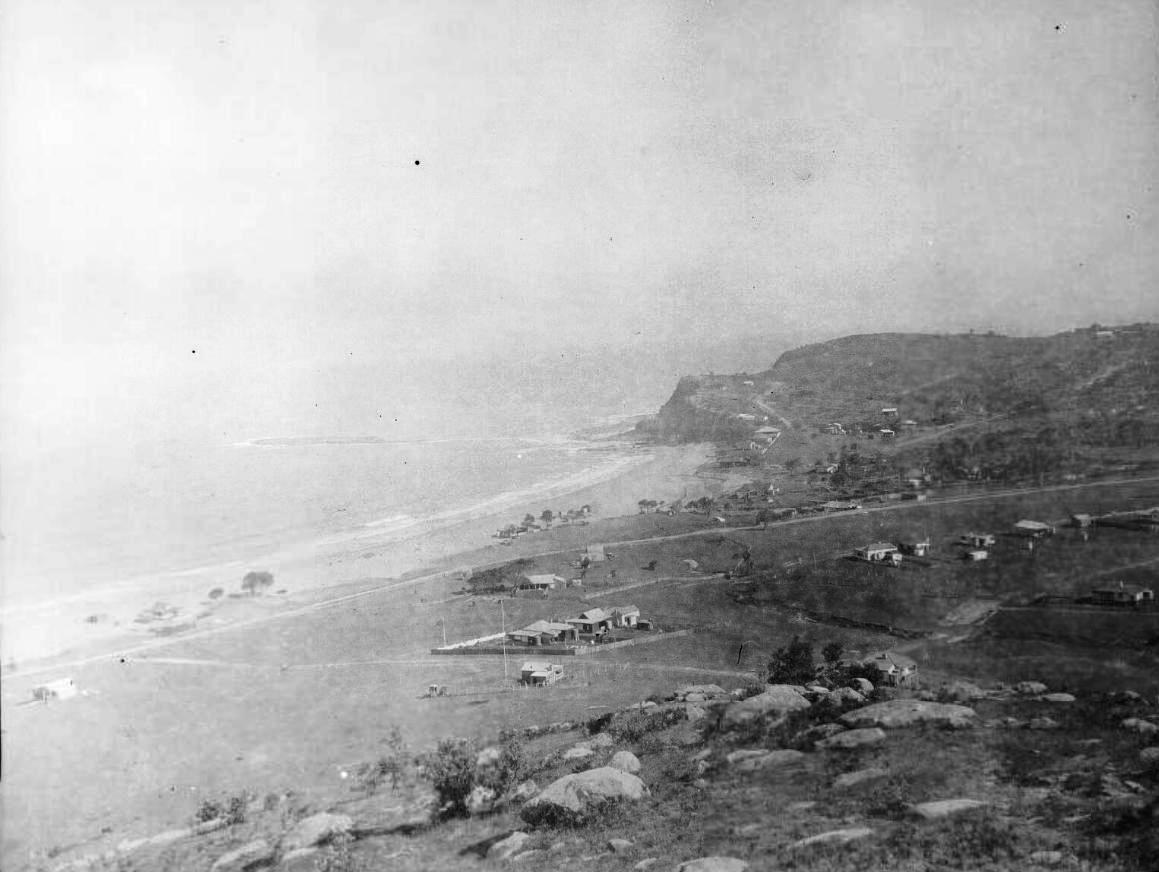
Above: Newport Beach, Sydney, February 1922, 1 / Michael Terry - PIC/8847/3/6 LOC Nitrate store PIC/8847
Below: Newport Beach, Sydney, 1922, 1 / Michael Terry - PIC/8847/3/6 LOC Nitrate store PIC/8847
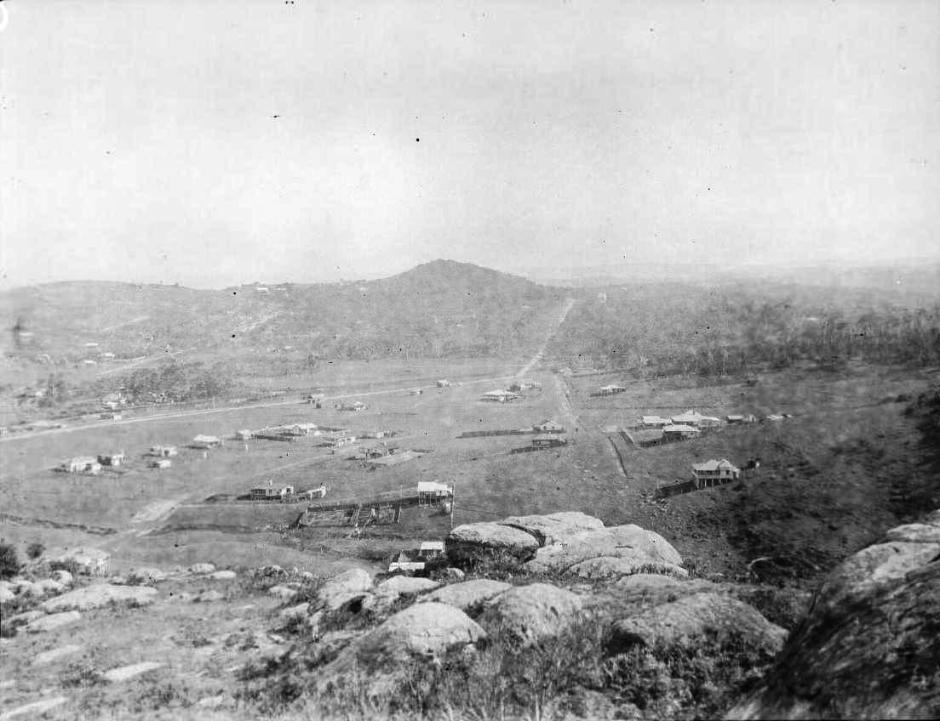
Michael Terry, FRGS, FRGSA (3 May 1899–1981) was an Australian explorer, surveyor, prospector and writer. He was born at Gateshead, County Durham, England. During the First World War he served with No. 2 Squadron of the RNAS Armoured Cars in Russia against the Bolsheviks, by whom he was captured at Kursk though subsequently released. He moved to Australia in 1918. Between 1923 and 1935 he led 14, mainly gold prospecting, expeditions through inland Australia; he wrote several books about his experiences.
Bibliography
1925 - Across Unknown Australia: a thrilling account of exploration in the Northern Territory of Australia. Herbert Jenkins: London
1927 - Through a Land of Promise: with gun, car and camera in the heart of Northern Australia. Herbert Jenkins: London
1931 - Hidden Wealth and Hiding People. Putnam: London
1932 - Untold Miles: three gold-hunting expeditions amongst the picturesque borderland ranges of Central Australia. Selwyn & Blount: London
1937 - Sand and Sun: two gold-hunting expeditions with camels in the dry lands of Central Australia. Michael Joseph: London
1945 - Bulldozer: the war role of the Department of Main Roads, New South Wales. Frank Johnson: Sydney
1974 - War of the Warramullas. Rigby: Adelaide. ISBN 0-85179-790-3
1987 - The last explorer: the autobiography of Michael Terry, FRGS, FRGSA. Australian National University Press: Rushcutters Bay, New South Wales. ISBN 0-08-034398-8
Rejected as medically unfit for World War II service, Terry was informally associated with British counter-intelligence. He claimed that in Australia he was misunderstood and his attempts to infiltrate Russian sympathisers in Sydney were seen as ‘going Red’. He wrote freelance and for the British government, continuing his themes of the part played by technology in overcoming distances and writing propaganda for the war effort in Britain, Australia and Canada. In 1945 he published Bulldozer, which documented the war role of the Department of Main Roads in New South Wales. Moving to Terrigal, north of Sydney, he took up farming and built a house that he named Dummer, after the Terry family’s ancestral home, Dummer House, Basingstoke, Hampshire. (1)
He was a fellow of the Royal Geographical Society (elected 1924) and the Royal Geographical Society of Australia. A Freemason, he was also an associate member of the RNAS Pathfinder Association of New South Wales.
Terry died on 24 September 1981 at Annandale, Sydney. He had donated his body to the University of Sydney. A memorial service was held at St Philip’s Anglican Church, Sydney. In 1987 his sister Charlotte Barnard completed and published his unfinished autobiography, The Last Explorer. An image of Terry and his camel ‘Dick’ was featured on the 1988 bicentennial commemorative $10 note. In 1957 the Terry Range, Western Australia, had been named for him. (1.)
1.Michael Terry. (2015, April 29). In Wikipedia, The Free Encyclopedia. Retrieved from wikipedia.org/Michael_Terry
2. Mickey Dewar, 'Terry, Michael (1899–1981)', Australian Dictionary of Biography, National Centre of Biography, Australian National University, http://adb.anu.edu.au/biography/terry-michael-15670/text26866, published first in hardcopy 2012
MICHAEL TERRY'S EXPEDITION
Mr. Michael Terry -with two Morris six-wheel trucks arrived in Adelaide recently after a six months' prospecting and exploration trip through little known parts of northeast Western Australia and the South Australian border, Covering nearly 5000 ' miles in difficult country that taxed to the limit the endurance powers of most of the early explorers. Terry's trip was not arduous, in that sense of the word, because it was accomplished by the aid of the most modern method of transport, which has so often of late, shown the possibilities of opening up and developing the uninhabited parts of Australia. He is full of praise for his two Morris six-wheelers which were equipped with, the original Australian Dunlop tyres with which he started out on his journey. "I give them a clean sheet," he said. Terry intends, at the earliest opportunity to return to Tanami to work the leases he has taken up in his quest for gold. He is writing a story of his travels which should contain many interesting accounts of his remarkable enterprise in exploring these little known parts of Australia.-"N. Q. Register."MICHAEL TERRY'S EXPEDITION. (1929, February 5). Northern Standard (Darwin, NT : 1921 - 1955), p. 4. Retrieved fromhttp://nla.gov.au/nla.news-article48032640
COURTS OPENED AT NEWPORT.
Two new courts, erected by a company for lease to the Newport Tennis Club, were formally opened yesterday afternoon by Major-General Sir Granville Ryrie, M.H.R., in the presence of an interested gathering, which included councillors of the Warringah Shire. The land is situated between the beach and the town, within ten minutes of the tram and about six minutes of the beach. The reserve comprises about two acres and later there will be additional courts. Up to date the company has spent £750 in putting the place in order, but a lot has to be done yet, including the erection of the necessary accommodation houses. The 'company' is included in the club, which holds the courts under hire. The club's fortunes to be guided by a committee of ten, with Mr. W. A. Crane as president, Mr. F. Tucker hon. treasurer, Mr. E. T. Penfold (treasurer of the company) secretary, and Mr. N. E. Penfold hon. assistant secretary. To mark the official opening, exhibition sets were played by Horace Rice, H. Utz, Dr. Utz, and G. Fisher, and Mrs. Utz, and Misses L. Bull, N. Lloyd and C. Lance. At night there was a celebration dance at Beach House. LAWN TENNIS. (1923, December 9). Sunday Times (Sydney, NSW : 1895 - 1930), p. 11. Retrieved from http://nla.gov.au/nla.news-article120539041
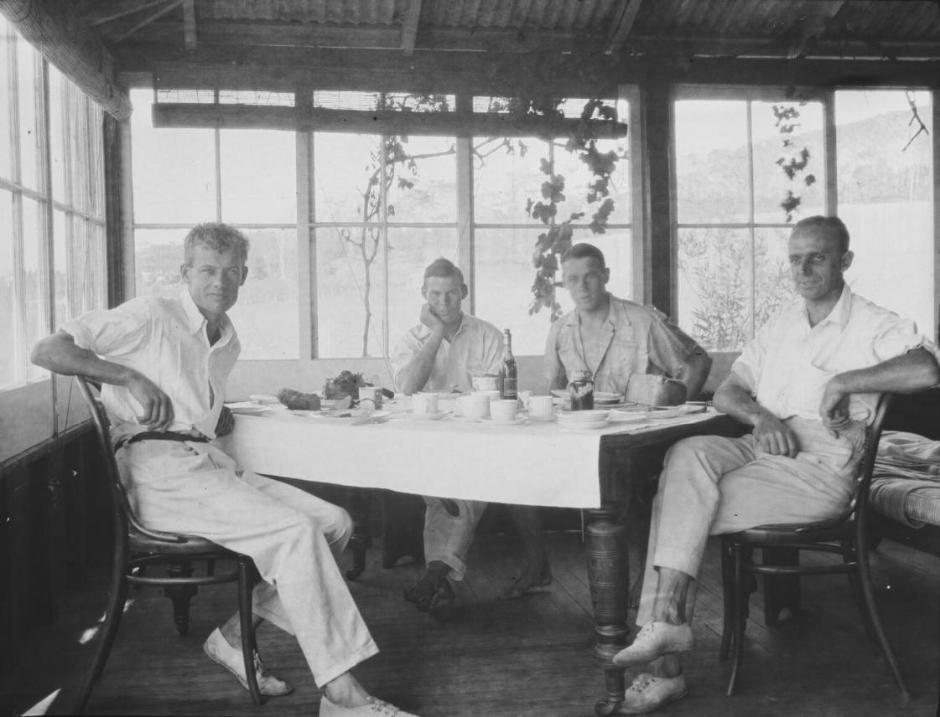
Michael Terry (left of picture) and friends at breakfast at the Penfold's home, Newport Beach, Sydney, 1922 - PIC/8847/3/9 LOC Nitrate store PIC/8847 - Others in Picture are two sons of Frederick Edwin Penfold, Eumungerie was the home of the Penfolds.; two Penfold boys were foundation members of Newport SLSC. One B. Penfold was in the first Bronze Squad of 1922. Fredrick and Alice M Penfold had five sons and one daughter Edwin T (born 1893), Frederick H (born 1894) Norman E (born 1896) Frank L (born 1898) Ian S (born 1910) and Alice G (born 1904).
Frederick Edwin Penfold was partner with his brother in W. C. Penfold & Co. - See William Clark Penfold
Reference
1.Betty Morrison, oral history, 1984 - Mona Vale Library Local History Unit. Retrieved from: http://www.pittwater.nsw.gov.au/library/local_history/Pittwaters_past/bungan
And to return to this flower of Pittwater - the 'Bungan Castle' orchid
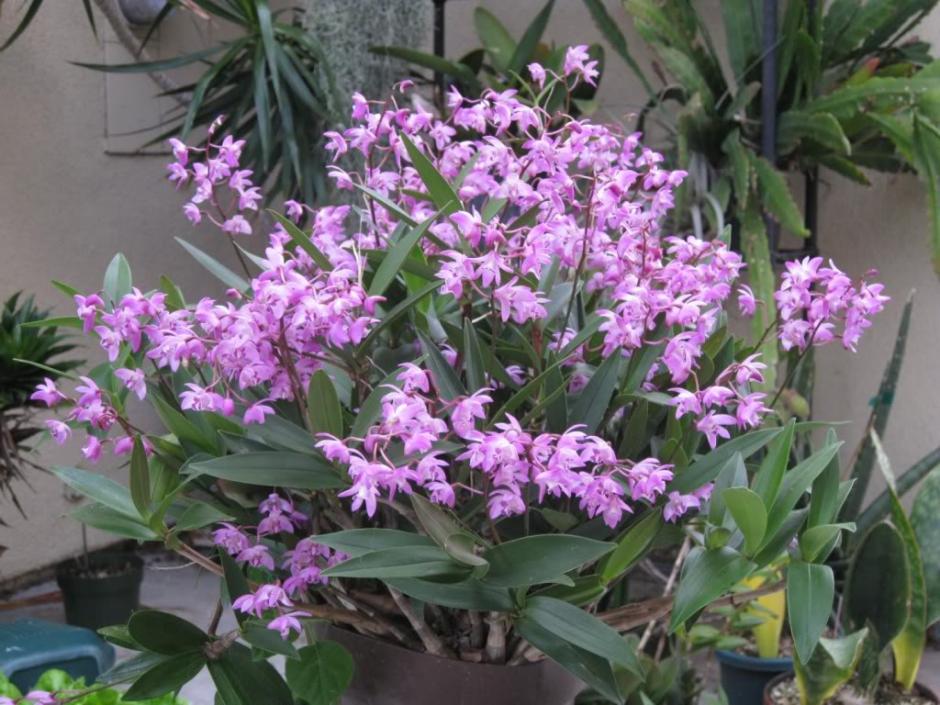
Above and Below Orchid Society of NSW Awards 9/20/1976 - Dendrobium - kingianum - cultivar : 'Bungan Castle' - Dendrobium kingianum blooming - courtesy M J Huntington Beach - USA
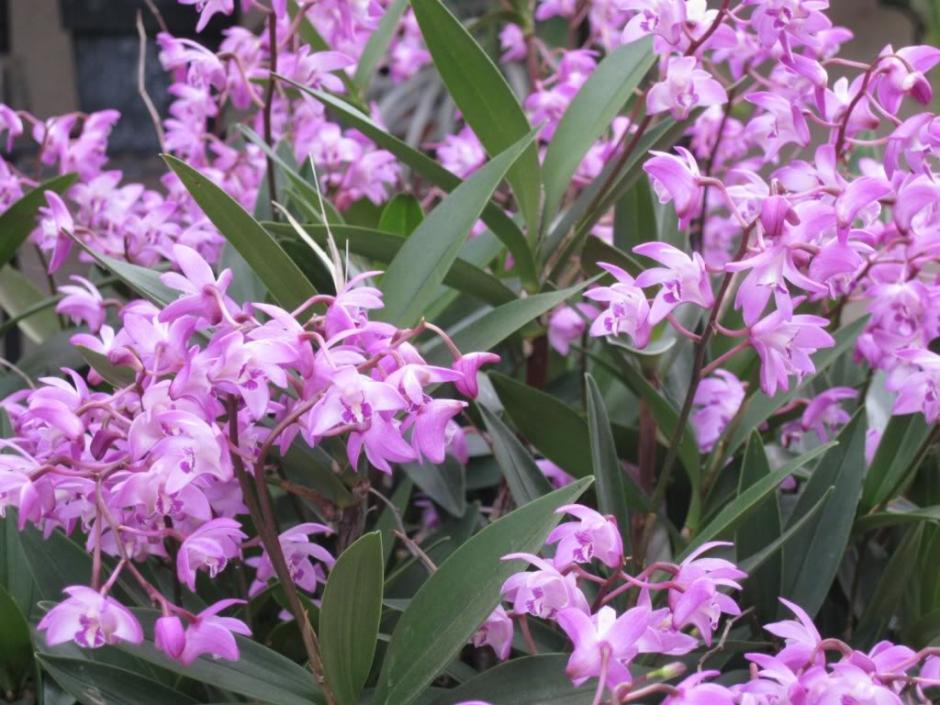
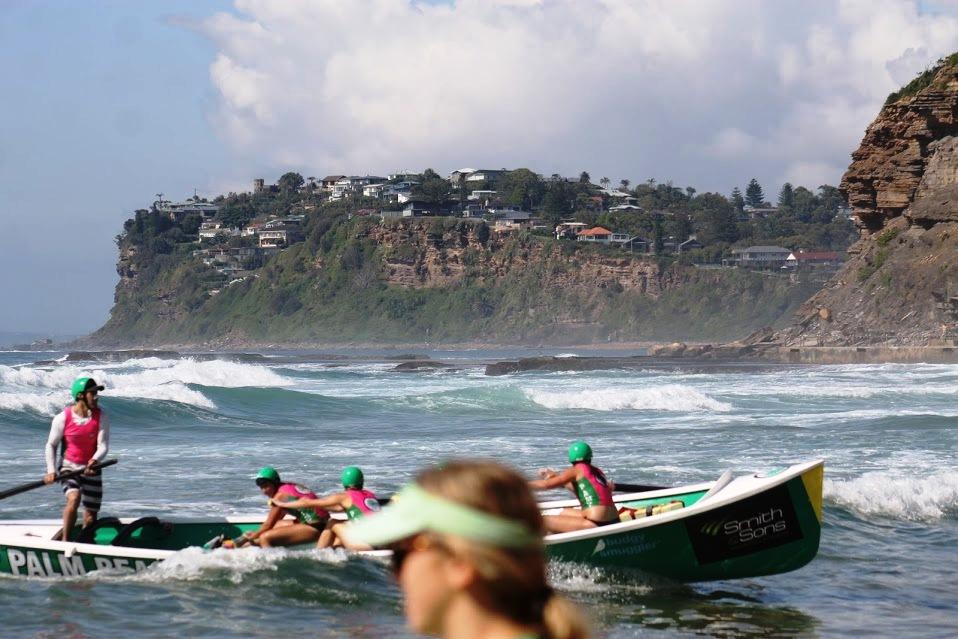
Bungan Headland from Bilgola Beach 7.11.2015
Pittwater Reserves: The Green Ways; Bungan Beach and Bungan Head Reserves - threads collected and collated by A J Guesdon, 2015.
Previous History Pages:
Marie Byles Lucy Gullett Kookoomgiligai Frank Hurley Archpriest JJ Therry Sir Patrick Gordon Taylor Bowen Bungaree W. Bradley 1788 Journal Midholme Loggan Rock Cabin La Corniche La Corniche II Lion Island Bungan Beach Botham Beach Scarred Trees Castles in the Sand Dame Nellie Melba lunches at Bilgola Spring, 1914 First to Fly in Australia at North Narrabeen Mona Vale Golf Club's Annual Balls Governor Phillip camps on Resolute Beach Ruth Bedford Jean Curlewis Mollie Horseman Charlotte Boutin May Moore Neville W Cayley Leon Houreux Frederick Wymark Sir Adrian Curlewis Bilgola Heron Cove Mullet Creek Shark Point Woodley's Cottage A Tent at The Basin Collin's Retreat-Bay View House-Scott's Hotel Bilgola Cottage and House The First Pittwater Regatta Women Cricketers Picnic Filmed In Pittwater Governor Phillip's Barrenjoey Cairn Waradiel Season The Church at Church Point Governor Phillip's Exploration of Broken Bay, 2 â 9 March 1788 Petroglyths: Aboriginal Rock Art on the Northern Beaches Avalon Headland Landmarks Steamers Part I Pittwater Aquatic Club Part I Woody Point Yacht Club Royal Motor Yacht Club Part I Dorothea Mackellar Elaine Haxton Neva Carr Glynn Margaret Mulvey Jean Mary Daly Walter Oswald Watt Wilfrid Kingsford Smith John William Cherry George Scotty Allan McCarrs Creek Narrabeen Creek Careel Creek Currawong Beach Creek Bushrangers at Pittwater Smuggling at Broken Bay An Illicit Still at McCarr's Creek The Murder of David Foley Mona Vale Outrages Avalon Camping Ground Bayview Koala Sanctuary Ingleside Powder Works Palm Beach Golf Course Avalon Sailing Club Mona Vale Surf Life Saving Club Palm Beach SLSC Part I - The Sheds Warriewood SLSC Whale Beach SLSC Flagstaff Hill Mount Loftus Pill Hill Sheep Station Hill S.S. Florrie S.S. Phoenix and General Gordon Paddlewheeler MV Reliance The Elvina Florida House Careel House Ocean House and Billabong Melrose-The Green Frog The Small Yacht Cruising Club of Pittwater Canoe and I Go With The Mosquito Fleet - 1896 Pittwater Regattas Part I - Dates and Flagships to 1950 Shark Incidents In Pittwater The Kalori Church Point Wharf Bayview Wharf Newport Wharf Palm Beach Jetty - Gow's Wharf Max Watt Sir Francis Anderson Mark Foy John Roche Albert Verrills Broken Bay Customs Station At Barrenjoey Broken Bay Water Police Broken Bay Marine Rescue - Volunteer Coastal Patrol Pittwater Fire-Boats Prospector Powder Hulk at Towler's Bay Naval Visits to Pittwater 1788-1952 Pittwater's Torpedo Wharf and Range Naval Sea Cadets in Pittwater S.S. Charlotte Fenwick S.S. Erringhi P.S. Namoi S.Y. Ena I, II and III Barrenjoey Headland - The Lessees Barrenjoey Lighthouse - The Construction Barrenjoey Broken Bay Shipwrecks Up To 1900 Barrenjoey Light Keepers Douglas Adrian Ross Newport SLSC 1909 - 1938 Part I Overview North Narrabeen SLSC - The Formative Years Bilgola SLSC - the First 10 years North Palm Beach SLSC A History of Pittwater Parts 1 and 4 Pittwater Regattas - 1907 and 1908 Pittwater Regattas - 1921 - The Year that Opened and Closed with a Regatta on Pittwater Pittwater Regatta Banishes Depression - 1933 The 1937 Pittwater Regatta - A Fashionable Affair Careel Bay Jetty-Wharf-Boatshed Gow-Gonsalves Boatshed -Snapperman Beach Camping at Narrabeen - A Trickle then a Flood Pittwater's Parallel Estuary - The Cowan 'Creek' RMYC Broken Bay Boathouse and Boatshed Barrenjoey Boat House The Bona - Classic Wooden Racing Yacht Mona Vale Hospital Golden Jubilee - A Few Insights on 50 Years as a Community Hospital Far West Children's Health Scheme - the Formation Years The First Scotland Island Cup, Trophy and Race and the Gentleman who loved Elvina Bay Royal Motor Yacht Club Broken Bay NSW - Cruiser Division History - A History of the oldest division in the Royal Motor Yacht Club Royal Motor Yacht Club Broken Bay Early Motor Boats and Yachts, their Builders and Ocean Races to Broken Bay, the Hawkesbury and Pittwater The Mail Route to Pittwater and Beyond The Wild Coachmen of Pittwater - A Long and Sometimes Bumpy Ride on Tracks Instead of Roads The Fearless Men of Palm Beach SLSC's Surf Boats First Crews - A Tale of Viking Ships, Butcher Boats and Robert Gow's Tom Thumb 'Canoe' Furlough House Narrabeen - Restful Sea Breezes For Children and Their Mothers From Telegraphs to Telephones - For All Ships at Sea and Those On Land Mona Vale Training Grounds - From Lancers on Horses to Lasses on Transport Courses Fred Verrills; Builder of Bridges and Roads within Australia during WWII, Builder of Palm Beach Afterwards Communications with Pittwater Ferries To Pittwater A History of Pittwater - Part 4: West Head Fortress Pittwater's Lone Rangers - 120 Years of Ku-Ring-Gai Chase and the Men of Flowers Inspired by Eccleston Du Faur Early Pittwater Launches and Ferries Runs Avalon Beach SLSC - The First Clubhouse Avalon Beach SLSC The Second and Third Clubhouses From Beneath the Floorboards at Hyde Park Barracks Bungaree Was Flamboyant Andrew Thompson - 'Long Harry' Albert Thomas Black John Collins of Avalon Narrabeen Prawning Times - A Seasonal Tide of Returnings Oystering in the Pittwater Estuary - Oyster Kings and Pearl Kings and When Not to Harvest Oysters Yabbying In Warriewood Creeks Eeling in Warriewood's Creeks (Includes A Short History of community involvement in favour of environmental issues/campaigns in and around Narrabeen Lagoon - 1974 to present by David James OAM) Eunice Minnie Stelzer - Pittwater Matriarchs Maria Louisa Therry - Pittwater Matriarchs Katherine Mary Roche - Pittwater Matriarchs Sarah A. Biddy Lewis and Martha Catherine Bens Pittwater Matriarchs Pittwater's New Cycle Track of 1901 Manly to Newport The Rock Lily Hotel Barrenjoey House The Pasadena Jonah's St Michael's Arch The First Royal Visitor to Australia: the Incident at Clontarf March 12th, 1868 Pittwater: Lovely Arm of the Hawkesbury By NOEL GRIFFITHS - includes RMYC Wharf and Clareville Wharf of 1938 + An Insight into Public Relations in Australia George Mulhall First Champion of Australia in Rowing - First Light-Keeper at Barranjuey Headland Captain Francis Hixson - Superintendent of Pilots, Lights, and Harbours and Father of the Naval Brigade The Marquise of Scotland Island The First Boat Builders of Pittwater I: the Short Life and Long Voyages of Scotland Island Schooner the Geordy Boat Builders of Pittwater II: from cargo schooners and coasters to sailing skiffs and motorised launches The Currawong: Classic Yacht The Riddles of The Spit and Bayview/Church Point: sailors, boat makers, road pavers and winning rowers VP Day Commemorative Service 2015 – at Avalon Beach RSL Cenotaph: 70th Anniversary Captain T. Watson and his Captain Cook Statues: A Tribute to Kindness Pittwater Reserves: The Green Ways; Hordern or Wiltshire Parks to McKay Reserve – From Beach to Estuary Pittwater Reserves, The Green Ways: Clareville Wharf and Taylor's Point Jetty Pittwater Reserves: The Green Ways Bilgola Beach - The Cabbage Tree Gardens and Camping Grounds - Includes Bilgola - The Story Of A Politician, A Pilot and An Epicure by Tony Dawson and Anne Spencer Pittwater Reserves - The Green Ways: Mona Vale's Village Greens a Map of the Historic Crown Lands Ethos Realised in The Village, Kitchener and Beeby Parks